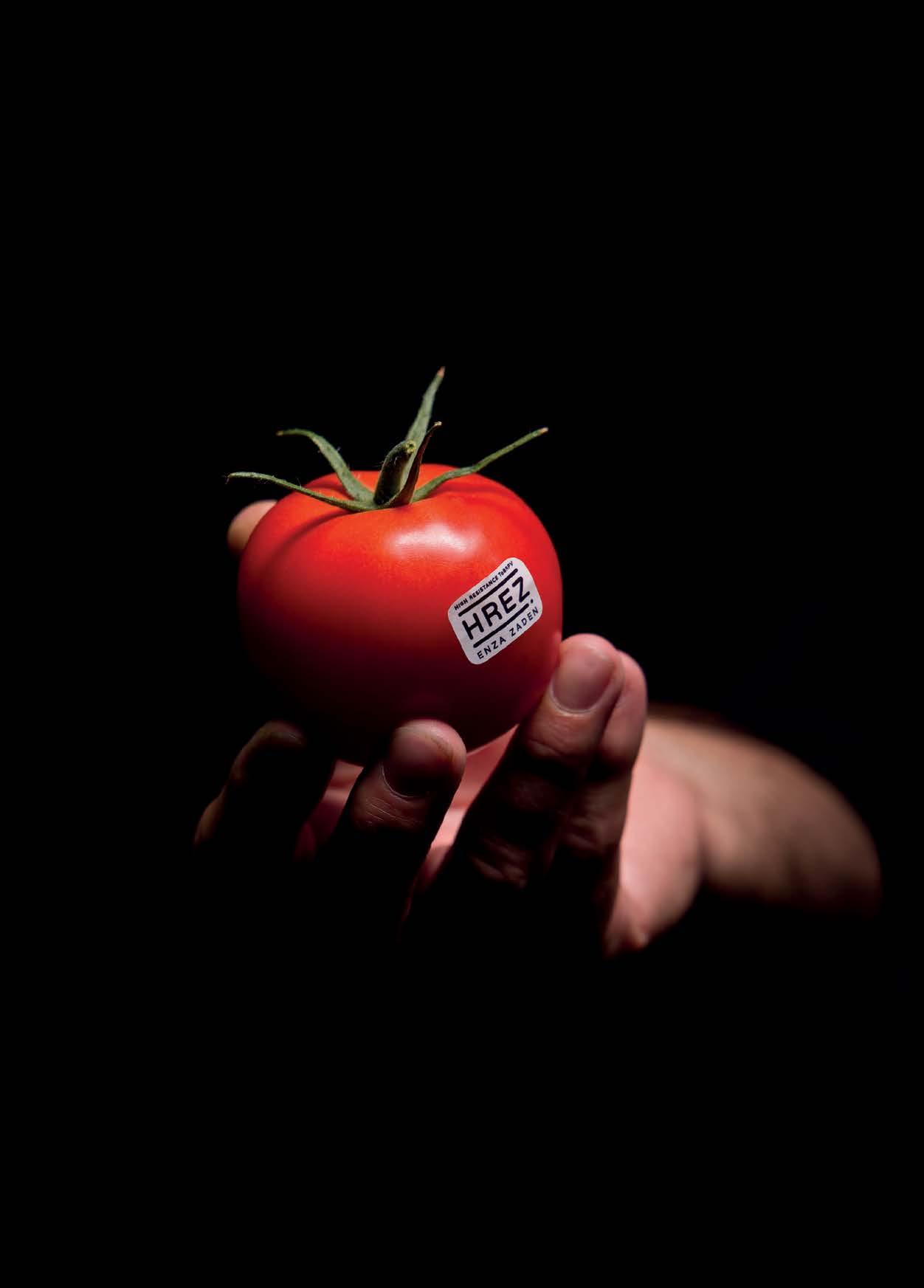




Do you or your team members want to develop new skills and knowledge in horticulture? Get in touch with Primary ITO today to find out more about training options for you and your business.
• Certificates and Apprenticeships
• Support and Funding Available
• Specialist training programmes in Fruit, Indoor and Outdoor Crop Production, Nursery, Post-Harvest and Distribution.
Talk to your local Training Adviser today: primaryito.ac.nz | 0800 20 80 20 | info@primaryito.ac.nz

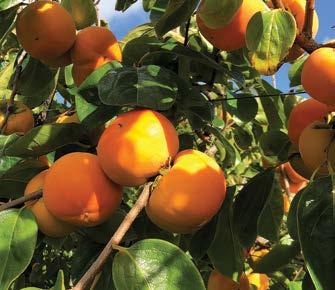

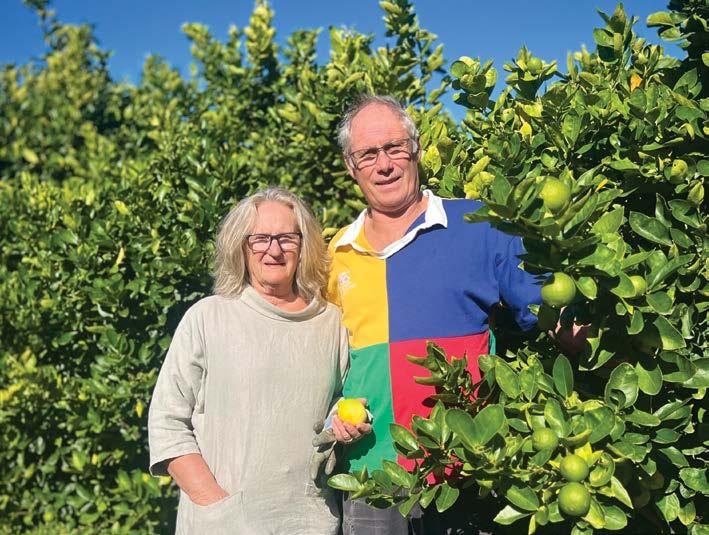
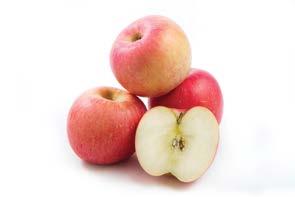
A regular advertorial section of new products and services. This publication does not endorse the products or services featured here.
11 New freshwater management micro-credential for horticulture sector On
Jared Fry with son Keaton are happy with this year’s Tasman kiwifruit crop. See page 6. Photo by Anne Hardie.
NZGrower & Orchardist is produced by Horticulture New Zealand and is free for all levy payers. The magazine is partially funded by a grant from the NZ Fruitgrowers’ Charitable Trust to ensure all fruit growers in New Zealand receive a copy each month. The magazine is also supported by Vegetables NZ, Process Vegetables NZ, TomatoesNZ, Potatoes NZ and Onions NZ.
The individual comments and views in this magazine do not necessarily represent the view of Horticulture New Zealand.
He tangata, he tangata, he tangata. Horticultural operators know all too well the fundamental role of their people –to serve people their daily dose of fresh fruit and vegetables.
Bernadine
Guilleux: HortNZ chair
Copyright © 2025 NZGrower & Orchardist
NZGrower & Orchardist:
ISSN: 3021-3606 (Print)
ISSN: 3021-3614 (Online)
Editor: John Gauldie, editor@hortnz.co.nz
Advertising Manager: Debbie Pascoe, 027 485 8562, debbie.pascoe@hortnz.co.nz
Design:
Scenario.co.nz, 04 385 9766, joy@scenario.co.nz
Subscriptions: subs@hortnz.co.nz
This publication uses vegetable-based inks and environmentally responsible paper produced from Forest Stewardship Council® (FSC®) certified, Mixed Source pulp from Responsible Sources.
Paper produced using Elemental Chlorine Free (ECF) and manufactured under the strict ISO14001 Environmental Management System.
The wrapper we use is 100 percent recyclable, it is LDPE 4 (Low Density Polyethylene) Soft Plastic and meets the required standards. For further information refer to: www.recycling.kiwi.nz/our-story
We’re calling for you to put forward those people you believe would bring valuable insight, experience, and passion to serve the industry and nominate them for the Horticulture New Zealand board. We have three seats up for election with nominations closing on Monday, 9 June. It’s also time to shine a light on those among you that have made a significant contribution to the sector to date. If you have someone you want to acknowledge, I encourage you to nominate them for an award and let the whole sector celebrate them with you at the Horticulture Conference Industry Awards and Gala Dinner in August.

This year we have six awards –Horticulture Bledisloe Cup, President’s Trophy, Industry Service Award, Sustainable Innovation Award, Manaaki Award and the HortNZ Life Member. Find out more about the awards criteria on the HortNZ website www.hortnz.co.nz
With this year’s conference being held in Wellington, we are looking forward to good participation from Ministers and officials. So, growers, I encourage you to come and hear from Wellington directly, participate in the sessions and connect with fellow growers from across the country.


Last year’s Horticulture Bledisloe Cup recipient Dr Stuart Davis at the Industry Awards and Gala Dinner. Find out more about the 2025 awards criteria on the HortNZ website www.hortnz.co.nz
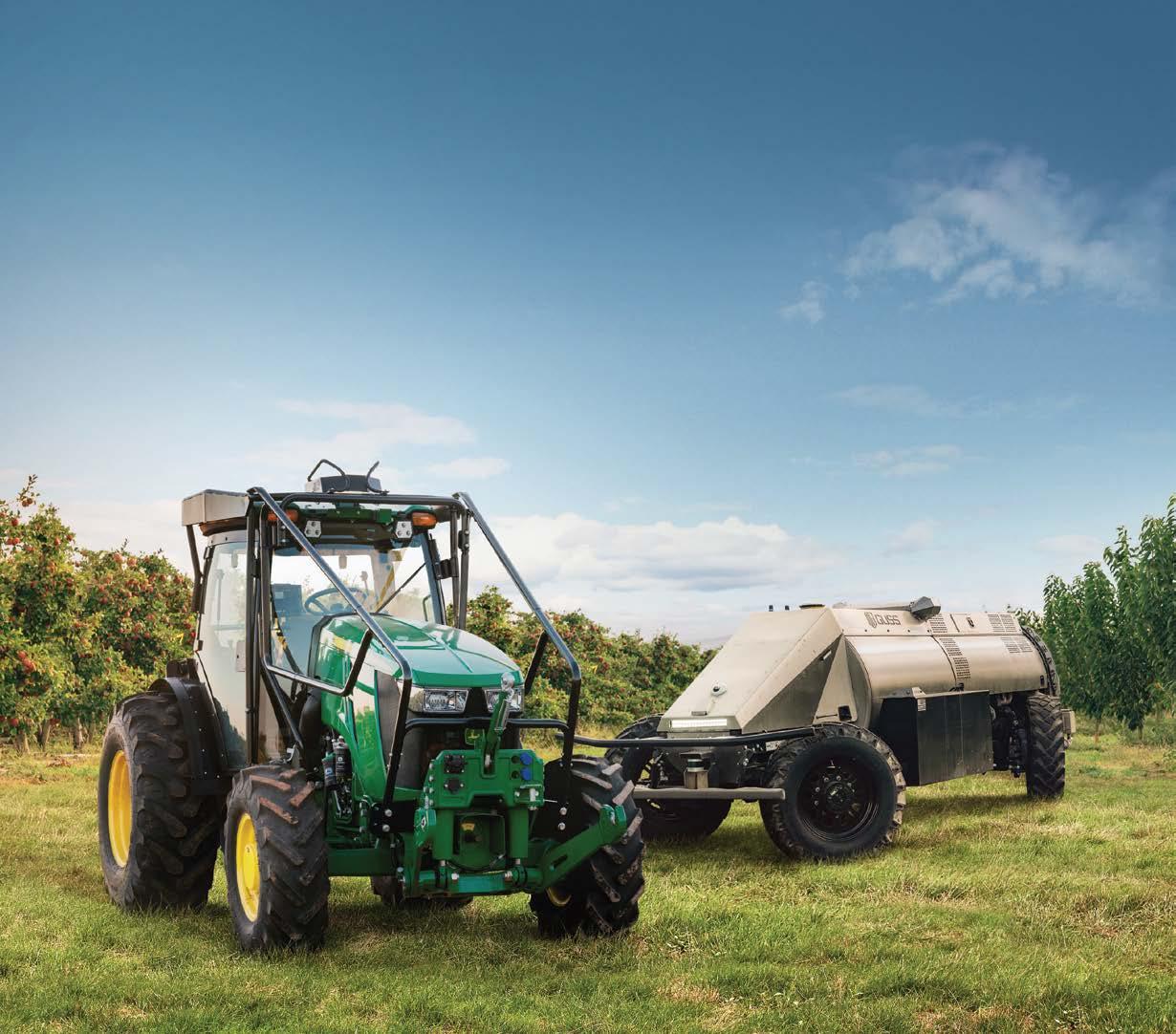

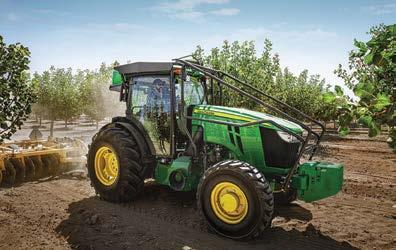
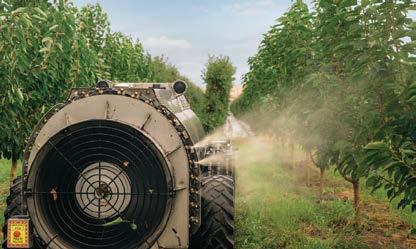
You called for enhanced hardware and cutting-edge precision technology to drive gains across your operation. And we’ve answered with a holistic solution purpose-built for orchards and vineyards.
Introducing the 5ML tractor with unprecedented power and narrow axle offerings. Meet Smart Apply, a LiDAR spray system that targets only the canopy, slashing input costs by minimising chemical usage. Plus, experience the Global Unmanned Spray System (GUSS), a semi-autonomous sprayer that independently manoeuvres through rows, mitigating human error and labour constraints.
We’ve made in-roads but it’s only the start of our shared journey towards enhanced productivity, efficiency, and sustainability.
Talk to your local John Deere dealer, today.


If New Zealand’s horticulture sector is to thrive into the future, we must invest in one of our most valuable resources: people, and in particular, young people.
Kate Scott : HortNZ chief executive
We need passionate leaders to guide our industry through rapid change, identify and seize new opportunities and respond to the complex challenges, now and in the future.
That’s why Horticulture New Zealand is focused on nurturing the next generation of horticultural leaders. From practical scholarships and industry recognition to leadership development, we are committed to helping young people grow –not just crops, but careers.

One of our initiatives is the HortNZ Leadership Programme, designed for both emerging and current leaders across the industry.
Hundreds of people have graduated from this programme, with participants going on to play significant roles across the sector.
Their backgrounds are as diverse as the industry itself –from rural banking to agronomy, butchery to biosecurity, marketing to geology.
Some are self-employed growers, others work in logistics, export management, science, or HR.
But what unites them is leadership potential and a strong commitment to our sector’s future. They have demonstrated leadership or leadership potential and a willingness to assume responsibility for grower or industry matters.
Beyond leadership training, we also celebrate and showcase excellence through initiatives like the Young Grower of the Year competition. This initiative doesn’t just reward skill and innovation. It builds networks, boosts confidence and highlights the enormous potential of young people in our industry.
Time and again, we hear from past winners and finalists that these experiences have been turning points in their careers – opening doors, building pride, and inspiring further ambition. That’s exactly the kind of momentum we want to create.
Another important initiative is our annual scholarship programme. We’re backing students pursuing degrees in fields as varied as engineering, science, policy, and environmental management, not to mention those in on-the-job training towards becoming trade-certified horticulturists.
These scholarships reflect our belief that the future of horticulture will require talent across a wide range of disciplines.
We also offer the Associate Director initiative, which provides a development opportunity for a future leader to join our board and gain experience in governance, leadership and strategy. It’s a great opportunity that prepares our future leaders for governance roles in our sector.
The Aotearoa Horticulture Action Plan (AHAP), a partnership between industry, government, Māori and science, has set an ambitious goal: to double horticulture’s farmgate value by 2035.
That kind of growth won’t happen by accident – it will take leadership and smart, motivated people ready to rise to the challenge.
Our job is to find and support them. Their job? To help us shape the future of horticulture in New Zealand. Young people are the future of growing and, from what I’ve seen so far, the future is in good hands.
On 29 May the government opened consultation on a suite of changes to national environmental policy. It’s fantastic to see the government introducing policies that recognise the national importance of commercial vegetable production for New Zealand’s food supply. This is the result of the advocacy of HortNZ, the vegetable product groups, district associations and growers, including many conversations with politicians and officials, supported by evidence, planning and legal work. We want to take this moment to thank everyone who helped with this advocacy and to celebrate this accomplishment.
This particular recognition is needed because of the unworkable freshwater rules vegetable growers face, particularly in the Waikato and Horizons regions. It will provide the direction for future plan changes, so they provide a more workable framework for vegetable growing across the country.
We have been asking for a national permitted activity for vegetable growing with a certified freshwater farm plan. This is an option in the national direction package now open for public consultation, so we will be supporting that in a version that works best for growers.
The government’s announcement also included enabling the development of water storage and managed aquifer recharge. The proposal includes removing the need for growers to get a resource consent to build larger-scale water storage schemes on land. This is welcome news for the industry because growers need a reliable supply of water to feed New Zealanders and the world. Reduced consenting burden for water storage will enable our industry to go from strength to strength and contribute to the government’s goal of doubling export value. Water storage also supports increased climate resilience as growing regions face longer and more frequent drought conditions.
Other proposals in the package include further changes to freshwater policy and Highly Productive Land. HortNZ will be writing submissions on the policy changes that are relevant to horticulture, all due 27 July. For further details and to be added to our national Grower Policy Reference Group, please contact HortNZ environmental policy advisor Emily Levenson: emily.levenson@hortnz.co.nz
When it comes to growing a thriving orchard, not all trees or tree nurseries are created equal. We believe the best trees come from experienced people, refined processes, and plenty of mud on the boots.
That’s why we’re out there, listening to Kiwi growers and constantly improving our methods to deliver higher-performing, higher-quality trees. With high-quality, handpicked, specialist rootstock and smart growing processes, we deliver trees that are consistent in appearance and vigour.
Place your order now for grafting and spring budding for the 2026 crop season - our team of experts are ready to help!
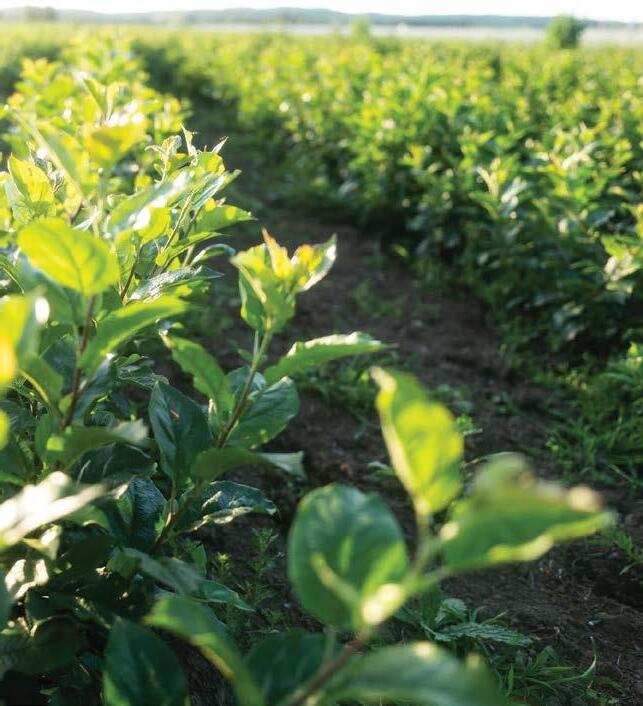

Tasman was on track for a stellar kiwifruit harvest until one late frost and then in late December hail took the cream off the top, but most growers are still pretty happy about the end result.
Anne Hardie
Jared and Selena Fry grow three colours of kiwifruit near Riwaka as part of their diversified horticulture business. Over 70ha spread around different blocks, the intergenerational business grows apples, hops and kiwifruit, including 4ha of Zespri RubyRed™.
The latter is a work in progress, but Jared has high hopes for the variety, especially in Nelson’s warm summers with little wind. This was their first season exporting the red kiwifruit, with variable production on some blocks, not helped by hail, and he expects it will take a couple more years for it to get fully established.
“It’s a fruit that very easily marks and has sizing challenges, but I think we will overcome them. It will take a number of years to really learn about it and fine tune things. There’s a lot
of support from Zespri and other industry bodies to assist us grow the red better and it will evolve over time. The market wants a big red, so we have to meet market demands.”
Whatever the solution, Jared is confident the variety will become more viable and potentially profitable. The red variety was first off the block at harvest in the orchard, with the first fruit picked on March 10, followed by the SunGold™ harvest kicking in during the last week of March and finishing with green from the first week of April.
Packouts have been good for the gold and green kiwifruit, despite the hail. While frosts caused substantial damage on some growers’ blocks in September and October at the pre-flowering stage, the Frys’ blocks escaped damage to their crops.
“But the hail event affected quite a number of kiwifruit blocks in the district and one of our blocks by the Motueka River was hit substantially hard. Without the frost and hail events, it would have been a solid season for the district and potentially record volumes.
“The Hayward variety has had yields well above the industry average and we’ve had solid yields for gold when unaffected by frosts.”
While Hayward has achieved good growing results this year, Jared says the orchard is still replacing vines over the course of time with the more profitable gold. Green will always stay in the mix though, for more diversity.
“It’s been one of our key drivers since my father’s day; to have multiple crops and it’s worked reasonably well. We’ve got several blocks in several areas, which gives us geographical diversity as well.”
The downside of multiple crops, he says, is no downtime during the year. Added into the mix is the packhouse which Jared says is considered small these days, but still packs for several other growers.
Between the packhouse and orchard, the business employs about 100 staff at the peak of the season, including locals, Recognised Seasonal Employer (RSE) workers from Fiji and backpackers. Jared says it’s a big relief in post-Covid-19 days to have a good source of staff now.
So far, he says the business has spent very little on robotics, but that could potentially change in the future, especially as their son, Keaton, has joined the team as the fourth generation of the Fry family to work in the business.
At Mainland Kiwifruit Growers Entity, business and supply chain manager, Luke McKay, says the late spring frosts and hail reduced the region’s crop by 10 percent on what would have been “a stellar crop”.
But the quality has been great and the end result is about 4.5 million trays of fruit with 3.3 million of those trays gold. The first of the region’s red fruit were exported this year and though only 25,000 trays, he says it’s a start.
By mid-May, there was no sign of early frosts to tarnish the tail-end of the harvest. While autumn was holding on well, Luke says there had been a few rain events through harvest which had caused some disruption for growers trying to get fruit off the vines and also a few vessels waiting to get into port. Overall though, he says the season was working out well.
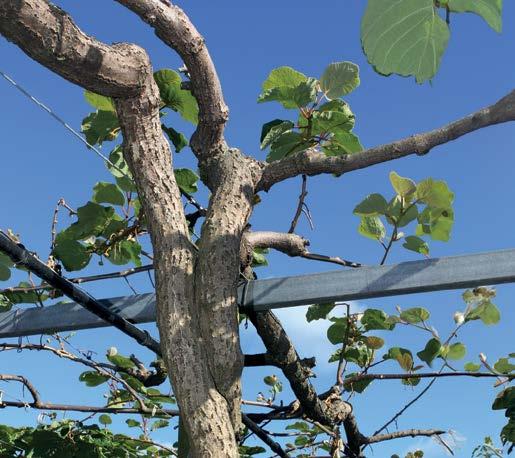

Horticulture has many opportunities for young people to progress their careers, and 45 South in Cromwell – one of the country’s biggest cherry exporters – has two females who are going places.
The variety of work on a large-scale cherry orchard like 45 South in Cromwell means Kayla Eagles and Kate Thomas have completely different areas of responsibility.
One loves working with fruit trees and the other machinery. What they do have in common is a passion for horticulture and being part of a successful team that produces export quality fruit.
Their paths in orcharding have gone in two directions, but both have led them to being managers on the 300ha orchard in Central Otago.
Aimee Wilson
Kayla, who is one of four managers under chief executive Tim Jones, looks after 25ha of cherry plantings for clients on their northern Pisa block. Kate is in charge of the spray sector –as an assistant manager, driving tractors and operating chainsaws at just 23.
Growing up in Dunedin, Kayla was set for a career in retail and hospitality and had children young. She moved to Cromwell at 25 and wanted to study – she was captured by the landscape with its orchards and vineyards, and decided to enrol at Otago Polytechnic’s Cromwell campus back in 2012.
Two of her teachers on the course are now cherry growers whose blocks she manages under 45 South.
Spending one summer pruning for Tim to get her foot in the door, Kayla noticed the company had introduced Upright Fruiting Offshoot (UFO) plantings, and those “neat and tidy lines” were just her thing.
45 South began planting 40ha of UFO cherry trees and Kayla was eager to be a part of it. Twelve years later she can proudly say she’s worked on every one.
As the specialised work was still in the trial phase with the UFO plantings, her job was to sort the trees that weren’t growing well.
Carrying on to finish her Diploma of Horticulture while also working three days a week and looking after her children, the company offered her flexibility to help her progress her career path.
“They have been very good at helping my journey be easier.”
She had another child and got married in amongst it all as well and worked her way up to becoming the Pisa Group manager three years ago.
Tim still comes out and teaches her one-on-one when she needs it and she appreciates his valuable input.
“The study is just the fundamental part, but the real stuff you learn by doing it on the job.”
On the northern blocks that she manages, she’s working with the traditional old style trees. With her level of responsibility, this means being up all hours of the night for frost fighting during the season.
Her downtime is reading, and often the subject choice is orcharding. Admitting to being an orchard geek, Kayla would love to continue and complete a doctorate, but there are only so many hours in the day.
“I’ve always wanted to keep learning about tree physiology, and pests and disease – and looking at the different ways to do orcharding. This is my passion and I’m really happy to have found it.”
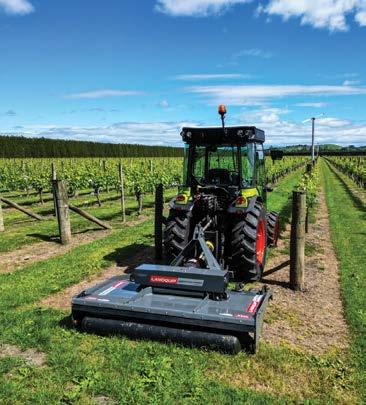
Being amongst the trees and working them is where Kayla is happiest. However, Kate, who left school and also studied horticulture, discovered operating machinery was more her interest.
Kate said she wasn’t afraid to just get in there and give things a go. Finishing school at 18 in Alexandra just after Covid-19 hit, she worked at an orchard packhouse over summer and then studied at the polytech in Cromwell where she completed a Certificate in Horticulture.
The study is just the fundamental part, but the real stuff you learn by doing it on the job
“I always wanted to be outside and in Central, and this was one of those jobs where I could do that.”
With just a week of machinery practicals under her belt, she took on a job at 45 South as a spray driver, and started working her way up and down the rows of trees with ease.
The orchard offered her so much variety of work that she was happy bouncing around different jobs where she was needed.
“All of the managers have taught me different things,” she said.
Both Kate and Kayla thought when they started out, that orchard work would be tedious and repetitive, but that certainly wasn’t the case. Although Kayla admitted the pruning was relentless when she first arrived, the method to madness was actually what she was looking for.
For Kate, it’s the organisation of the orchard she enjoys. Now four years later she is leading the team of six spray drivers. Her advice for anyone wanting to try out orcharding is that if they enjoy being outside, then this is definitely the career for them.


45
45 SOUTH EMPLOYS ABOUT 20 FULLTIME STAFF AND 500 CASUAL WORKERS IN SEASON
“Yes, it can be hard in the middle of winter, but in the season it can also be really fun and you get to meet a whole lot of different people.”
45 South employs about 20 fulltime staff but in season they employed over 500 casual workers, receiving thousands of applicants every summer.
Kate said there was such satisfaction from watching a tree in autumn progress and grow, ultimately ending up with fruit in the bucket in the middle of summer.
“There’s this small period of time that we are picking and it’s chaotic and then it’s all over,” Kayla added.
Being an orchard manager was a busy job and Kayla said there was a lot to keep up with. She was currently reading a paper on freshwater management.
Horticulture New Zealand, in partnership with Fruition Horticulture and Primary ITO, has developed a microcredential Assess and manage risks to freshwater from horticultural production that looks at the concerns and practices required to reduce environmental risks from horticultural operations – she has signed up for this; it made sense for her to keep upskilling.

The industry has come a long way in the 12 years she’s been involved and now the company employs more females than males – although she’s the first female orchard manager.
And she wasn’t going to be doing any of the ‘soft’ roles either – although she admits it’s taken a bit of encouragement from young Kate to give her the confidence around machinery.
For Kate, it’s the organisation of the orchard she enjoys. Now four years later she is leading the team of six spray drivers
“And that’s what’s really great is the younger generation being able to teach us.”
Technology was changing all of the time and now with robots being more widely used, 45 South has invested in Burro technology to make life easier in the picking season.
“We have been trialling using Burro for mowing and weed spraying to help with the cost of someone sitting on a tractor,” Kayla said.
Nothing beats having a mentor with one-on-one contact out on the orchard, and Kayla is enjoying passing on the knowledge she has learned.
She loves to teach in the way she was taught by Tim and consultant Earnscy Weaver, “because it’s about education to everyone.”
Primary ITO has introduced a new micro-credential (bite-sized learning) to equip horticulture operators with knowledge on how to assess and manage risks to freshwater sources on a production site.
The micro-credential – Assess and Manage Risks to Freshwater from Horticulture Production (Level 4) – is suitable for growers, employers, horticulture advisers and others interested in furthering their knowledge in this area. It provides the ability to: assess potential risks to freshwater values and ecosystem health from horticultural activities; identify biophysical and management risk factors; and recommend best practices to manage these risks effectively.
The learning uses a scenario-based approach and can be undertaken entirely online. It takes three months to complete.
This micro-credential will provide a better understanding of what is required to help reduce confusion and make the process easier
The micro-credential was developed in collaboration with Horticulture New Zealand, to support the sector to understand and respond to increasing legislation and regulatory requirements to protect rivers, lakes and streams.
Hamish Gordon, sector manager at Primary ITO, says this micro-credential focuses on best practice.
“It will enable people to learn how to assess risks associated with the use of freshwater on their production site, to enable more informed decisions, and to ensure the right information is collected.”
Hamish adds, “the reality is that industry will need to meet the regulatory requirements. This micro-credential will provide a better understanding of what is required to help reduce confusion and make the process easier.”
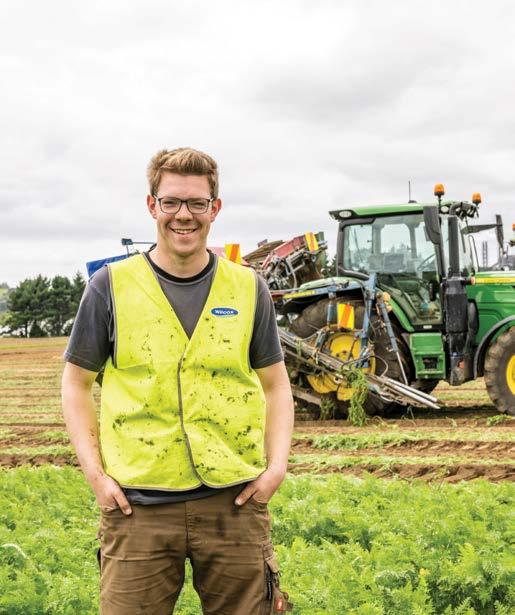
Learn more or sign up to the new micro-credential by visiting www.primaryito.ac.nz call 0800 20 80 20 or email info@primaryito.ac.nz



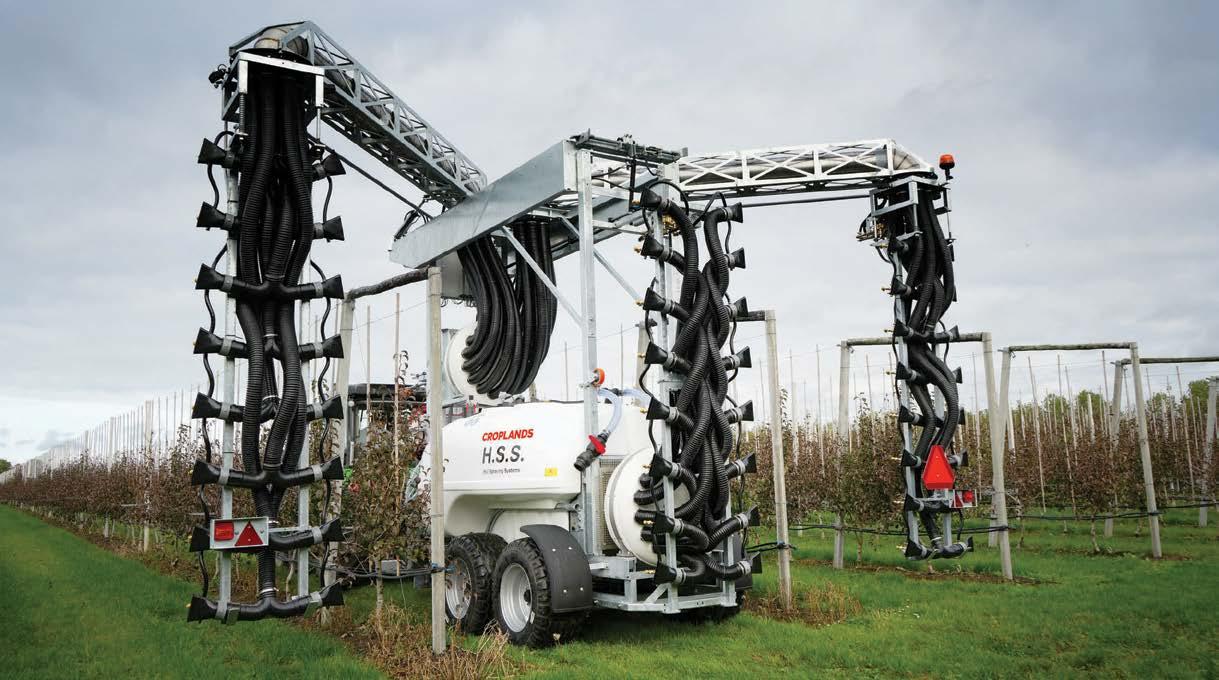




Croplands have a range of options to suit any orchard, no matter what your growing style or scale. Consult your local Croplands Territory Manager to discuss your growing needs.
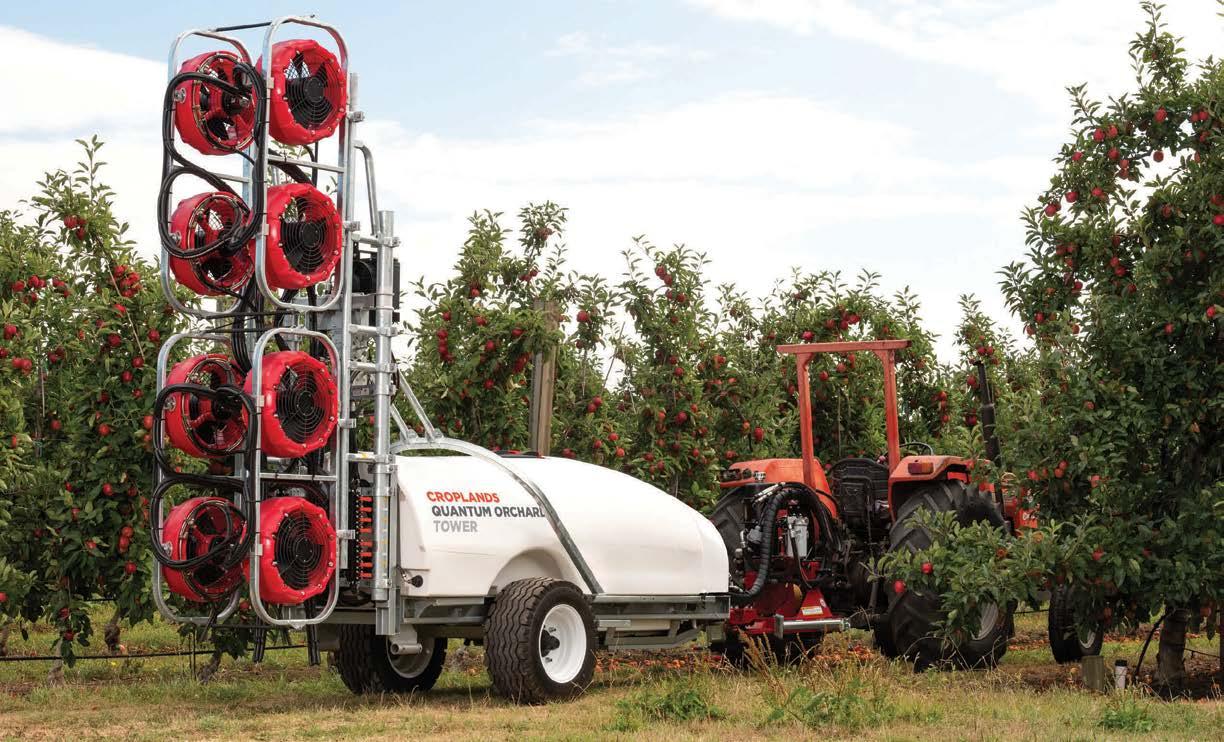






Ngāi Tukairangi Trust recently invited five Fijian ratus (chiefs) to a special ceremony in Matapihi to celebrate the trust’s relationship with their villages.
Recognised Seasonal Employer (RSE) workers from the villages have become whānau to Ngāi Tukairangi and the Matapihi community. CARLY GIBBS was invited to attend the ceremony.
The kiwifruit vines that blanket the left side of coastal Matapihi in Mount Maunganui are maintained by a team of Fijian men who had never seen kiwifruit until arriving in New Zealand.
Despite their knowledge of the All Blacks and Super Rugby, little was known about the country’s other hot commodities, Hayward and SunGold™.
Ratu Roseru, 37, recently completed his third seven-month stint in Matapihi under the Recognised Seasonal Employer (RSE) scheme.
Speaking to NZGrower & Orchardist, he joked that he wasn’t sure he’d return after his first, as he embarked on a steep kiwifruit learning curve.
“The second year was much easier once I knew the work,” he chuckles.
Farming in his home village, Masi, 45 minutes inland from the nearest tar seal road in the Nuku district, is done without any machinery or specialist tools like secateurs. His first time on a tractor was in Matapihi, and it was a scary experience.
“We only use a fork, knife and spade back home,” he says.
Ratu is a farmer and a former private in the Fijian army territorial force. He spent more than a year fighting on Iraq’s frontline in 2015. “It was hard. People died every day.”
Coming to New Zealand to work in the kiwifruit industry was easy in comparison, but for some of his colleagues and relatives, from his same remote village, it was their first time on an aeroplane.
For the past three years, Ratu has led 10 Fijian labourers on a 50ha Matapihi green and gold orchard and a 6ha Te Puke green orchard, owned by Ngāi Tukairangi Trust.

Iwi meets village
Established in the 1980s, Ngāi Tukairangi Trust owns 227ha of kiwifruit, apple, and persimmon orchards across the Bay of Plenty, Hawke’s Bay, Gisborne and Northland, and is a shareholder in several horticulture companies.
In 2020, the trust built a modern accommodation ‘village’, comprising cabins for 24 workers, a courtyard with picnic tables, and shared kitchen, lounge and bathroom –adjacent to its head office in Matapihi.
“We wanted it to be an iwi-meets-village scenario,” Andrew Wood, the trust’s general manager, says, explaining that a “scattergun approach” of scooping up workers from different locations in vans didn’t appeal.
“We contacted the government in Fiji, and they gave us two villages on the main island to go and see.”
Since then, the trust, comprising 2000-plus Māori shareholders and 80 permanent staff, has ‘adopted’ 40 Fijian workers from five villages along the Navua River line, in the Nuku district, who have become whānau to Ngāi Tukairangi and the Matapihi community, and on each arrival are welcomed with a pōwhiri at Hungahungatoroa Marae. The Nuku district was chosen due to its community spirit and that it is centred around a primary and secondary school.
Trust chairman Ratahi Cross says they also employ workers from Samoa, but their connection with the Nuku people is particularly close, and Ngāi Tukairangi’s management team visits them every year to connect and ensure their positive impact.


In April, the special symbiosis of that relationship was on display when Ngāi Tukairangi paid for five Nuku ratus (chiefs) and the manager of wellbeing for Fiji’s iTaukei Affairs Board, Jone Driu Drugunalevu, to visit Matapihi over three days to see where some of their men work.
Their stay was marked by a feast and kava ceremony, where the RSE workers sang in harmony. Jone and each chief were gifted a different pounamu or jade toki (necklace).
Jone says seeing the available resources in New Zealand and how Māori have tapped into them to grow an asset base was of interest, as was seeing firsthand the linkages of Fijians as labour input.
Benefits include paid employment for “desperate” Fiji youths, learning time management, different methodologies for crop growing, and responsibility for fruit graded in a packhouse – all transferable skills for when the men return home. Furthermore, Māori and Pacific themes blend well, providing a natural foundation for relationship building.
An example of best practice is the two-way street in which they show appreciation. Ratahi says hosting the chiefs in New Zealand, which included sightseeing, was to acknowledge how grateful the trust is for them sending whānau members here for months on end.

Bay of Plenty National MP Tom Rutherford and Mike Chapman, chair of NZ Ethical Employers, attended the dinner and spent time with Ngāi Tukairangi RSE workers.
“Ngāi Tukairangi aren’t the only example of best practice under the RSE scheme,” Mike says. “But they are a standout, demonstrating how the scheme should operate and leading by example. Ngāi Tukairangi set the benchmark for what the RSE scheme can and should look like.”
Ngāi Tukairangi aren’t the only example of best practice under the RSE scheme – but they are a standout
The trust also gives back to the Nuku people via student scholarships, school and sports equipment, rugby jerseys, and generators for Nuku High School, which had no power. Next, they plan to invest in business education for Nuku youth.
Ratahi says they happily give back but are mindful not to upset the balance of the villages and leave too many expectations.
“Instead of looking at long-term expectations, you’ve got to look at short-term gains that build something that doesn’t require us for the next step.”

IT’S WELL-MANAGED, WITH A STRONG FOCUS ON WORKER WELLBEING. WITHOUT THE RSE SCHEME, THE HORTICULTURE AND WINE INDUSTRIES SIMPLY WOULDN’T HAVE GROWN
THE TRUST COMPRISES: 2,000+ MĀORI SHAREHOLDERS
80 PERMANENT STAFF
40 FIJIAN WORKERS FROM FIVE VILLAGES


RSE workers flank sitting village ratus (chiefs) and Jone Driu Drugunalevu, manager of wellbeing for Fiji’s iTaukei Affairs Board, pictured front fourth from the left
The RSE scheme was developed as a partnership between the horticulture industry and the government to address seasonal labour shortages. Today, labour inspectors oversee compliance across more than 150 approved RSE employers. “Poor employers don’t make it into the scheme,” says Mike. “It’s well-managed, with a strong focus on worker wellbeing. Without the RSE scheme, the horticulture and wine industries simply wouldn’t have grown.”
Tom says last year the government increased the RSE worker cap by 1250 to 20,750 for the 2024/25 year and made other changes, including adding Timor-Leste to the list of eligible countries to partake in the RSE scheme.
Ratu, whose dad, Chief Alusio Vunivalu, was here for the visit, says the RSE scheme has financially changed the lives of families like his. He’s married to Kinisimere, a school teacher, and they have sons Ratu Samuele, 8, and Ratu Demesio, 7, whom he speaks to on the phone twice daily while away. He and his RSE teammates have gone from making $5 an hour in Fiji to $25.85 in New Zealand.
“When we first came here, in the first year, one of the boys could build a house straight away from (one seven-month stint),” he says. “Some of the boys extended their houses. It changed a lot of households. It is hard being away from family, but you reap what you sow later.”
Unmatched workforce
Andrew Wood says the Pasifika workers are reliable, keen and have reverence for hard work.
“We would love to employ Kiwis; we are actively trying to employ Kiwis, but it’s hard to find as many keen Kiwis.”
Ratahi echoes this, saying even independent travellers don’t compare to the work ethic of RSEs. “These guys are here because they really want to feed their family,” he says.
Nuku villagers chose Ratu as their team leader in New Zealand, and they look after his and the other men’s plantations of taro, kava, and cassava while they’re away, which happens on a team rotation basis.
It’s an opportunity to help our families have a better life as a village; as a community
Building their economy through equal employment opportunity in New Zealand also gives villagers the incentive to give back to themselves.
Ratu says, “It’s an opportunity to help our families have a better life as a village; as a community.”
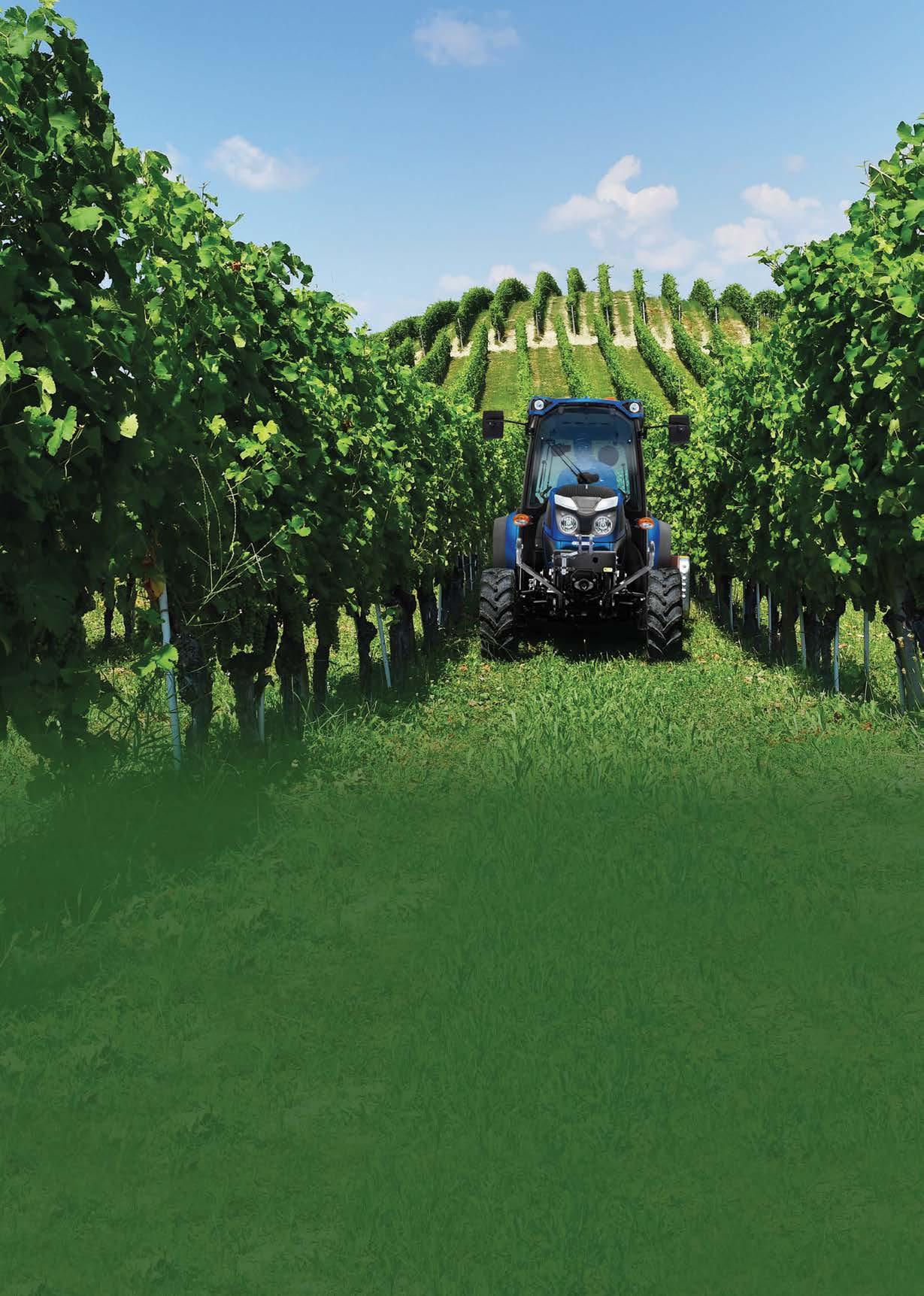
Leasing is made easy with Landini. Our fully maintained operating leases are available at highly competitive rates across the entire range of tractor models- from 60 to 310 horsepower. Your payments are fixed, easy to budget for, and tax deductible. Lease a brand new tractor for the term you want and hand in the keys when you’re done - easy as that.
Talk to your local Landini dealer today.

Landini. Passion for innovation.

Eighteen years after suffering serious burns in a farm accident John Ross says he appreciates the flat land and accessibility of the orchard, just 17km out of Gisborne city
‘WHERE WE WERE
’
The chance to develop a mixed-variety citrus orchard near Gisborne has given a former Wairoa couple an enviable lifestyle after some pretty taxing times.
Kristine Walsh
“We’d been looking all over the country for a lifestyle block with the potential to have a business and ended up finding this one very close to home,” John Ross says of the Matawhero property.
“It was already planted in citrus and we were struck by how it was laid out. And how, from the house site, you can survey the entire orchard so when the trees are in flower it is a stunning, scented spectacle.”
It was a picturesque conclusion to a sometimes ugly journey for John and wife Sophia who, 20 years ago, were happily working the Waiatai Valley sheep and beef station that had been in the Ross family for a century.
Even for farming folk used to their fair share of challenges, times got extra tough.
In 2007, the then-50-year-old John had an accident while burning-off blackberry, suffering burns so serious the Eastland Rescue Helicopter had to carry out an emergency uplift to Gisborne Hospital, from where he was transferred to Waikato for specialised treatment.
After months of hospitalisation and rehabilitation he returned to work. But, while knocking around the farm, he found it difficult to protect his fragile scar tissue.
And if that wasn’t tricky enough, the couple’s challenges ratcheted up many notches when they were blasted by the Hawke’s Bay deluge of April 2011, their station being among the heaviest hit in a region that was hit very, very hard.

After a life of sheep and beef farming, Sophia and John Ross have become award-winning growers of multiple varieties of citrus
That led to a wall of recovery work and between the injury and the flooding, the couple were prompted to seek out a less demanding opportunity.
But it was not a direct migration from Wairoa to Gisborne: they sold the farm in 2013 and moved into their Māhia Beach home, where they remained for two more years after buying the Matawhero property in 2016.
“The former owners agreed to stay on to manage the orchard while I worked in real estate and land management, so it was a great solution for us,” says John. “Sophia had been growing limes back in Wairoa but I didn’t have any experience at all so it was a great chance to come over and work under their guidance.”
When they did make the permanent move to Matawhero, Sophia took the lead for three years until John could devote himself to the orchard full-time.
Between them they had taken on a 5.53ha orchard planted in Encore, Richard’s Special and Satsuma (Okitsu) mandarins, with pockets of Tahitian and Bearss limes, Valencia and Navel oranges, and young Star Ruby grapefruit.
“Basically, we just set about making the best of what we had,” John says. “We did add some artificial shelter and increased plantings in some vacant areas, but the real focus was on good land and tree management to improve production.”
The mix of plantings creates a manageable harvest flow and even gives the Rosses a bit of quiet time in early winter to take some time out for themselves.
“But it certainly keeps us busy,” says John. “We’ll start harvesting the Richard’s Specials in August then dive into
Waimea has been at the forefront of bringing new rootstocks and varieties to NZ, to assist growers in having some of the most highly efficient and productive orchards in the world.
We are pleased to be continue this with the production of trees on Gisela® cherry rootstocks and Geneva® apple rootstocks.





Please contact the Sales team to discuss availability:
Grant Bryan, 0274 201 003, grant.b@waimea.group
Kate Marshall, 0274 201 033, kate.m@waimea.group


www.waimeanurseries.co.nz


the Encore and work through the Valencia, limes and grapefruit, with things slowing down by the end of February.”
Like any endeavour, he says, there have been some niggles along the way.
For example, rigorous testing has failed to identify why some of the limes aren’t producing as well as they could.
Then there was that hairy moment when, during 2023’s Cyclone Gabrielle, he stood on the stopbank at the rear of the property and watched as the Waipaoa River roared and rose, triggering some pretty anxious memories.
“We were getting geared up to evacuate equipment but, just in time, the river level started going down,” he says.
“It turned out the research we’d done before buying the property paid off in terms of protection from flooding, but others around us were very, very badly affected.”
The resulting high water table did, however, have an impact on the trees’ flowering and fruitset, with some fungal issues thrown in for good measure.
“So it’s been great to get back to a proper season this year with decent tonnages of good quality fruit,” says John.
“I guess it’s just that great farming leveller… the wind and rain don’t care how much work you have put in.”
The Rosses must be doing something right as they have been award winners across multiple categories at the Freshies, the annual awards organised by their packing/ marketing representatives, First Fresh.
And they plan to keep on doing it.
“I love working with the trees and learning all I can about citrus management. There’s a lot more to it than I first thought but we’ve had a lot of great advice from some really helpful sources,” says John.
I guess it’s just that great farming leveller… the wind and rain don’t care how much work you
have
put in
“On a small block like ours you can do as much or as little as you want but the more you do, the bigger the reward.”
Meanwhile, and though the scars remain, John believes there is a glimmer of silver lining to that horrible accident back in 2007.
“If I hadn’t been for that ride on the rescue helicopter we wouldn’t have started on the journey that brought us to where we are today,” he says.
“We very much enjoy our life here which is close to the city, where we wanted to be, on flat land with soils in which you can grow just about anything.
“The place just had something very special about it and we feel it’s where we were meant to be.”
Two years after Cyclone Gabrielle wreaked havoc on many citrus crops, grower resilience has borne fruit with some great results unfolding in the 2025 harvest.
Citrus NZ chair Ian Albers says that, by mid-May, picking of Satsuma mandarins was coming to a close in the major growing area of Kerikeri; was in full swing in the equally-productive Gisborne; and was also underway in Matakana, just north of Auckland.
Overall, quality was looking good despite some patchy rainy weather in Gisborne and massive rainfall in Northland, he says, and fruit was tasting great as growers transitioned into midseason varieties of Satsumas.

Speaking of good value, by mid-May lime harvesting was in full cry and fruit was on the shelves at around $6 a kilogram – well down on earlier years – largely due to increased imports, most from Viet Nam.
Those reduced returns are certainly tough on growers, Ian Albers said. “But on the flipside we are seeing a large increase in lime consumption and that’s great for consumer engagement.”
As a born-and-bred Mainlander, he was particularly looking forward to the grapefruit harvest that was due to start by the end of the month.
At that time lemons were also well underway in all growing regions, with strong supplies of good-value Meyer and Yen Ben putting paid to the temporary shortfall experienced in the space between the start of harvest, and the running out of fruit imported from the United States.
“Export packing, too, is underway and this will run through until July with the main markets being Japan and the United States,” Ian says. “And while it is unclear what impact proposed tariffs will have on lemons heading to the United States, being a niche item in this market we don’t expect demand to drop away, even if the price is slightly increased.”
“Back in the day when making your own marmalade was a big deal, we’d see strong early demand and even marketed a green-tinged ‘marmalade grade’ that home cooks were pretty keen on,” he said.
“Given it can interfere with some people’s meds, grapefruit can get a bit of a bum rap, but in my view you can’t beat a half-grapefruit sprinkled with sugar and left in the fridge overnight.”
Last on the short-term roster is Navel oranges, which were showing good colour and are due for harvest from mid- to late-June.
“There has been imported fruit to fill the gap but we know how much consumers love a good, sweet New Zealand Navel, so they’ll be looking forward to that fruit coming on stream.”
Aorangi Merchants is a Timaru-based, family-owned importer and wholesaler of premium garden, arboricultural, horticultural, and industrial tools. Since 1994, we’ve served the horticultural market across New Zealand with top global brands like WOLF-Garten, ARS, Vesco, Samurai, Hickok, Manzana, Pro Horto, and Sunya—delivering quality products, expert support, and nationwide service.











Jeremy Noakes has been growing persimmons, mostly in the beautiful rural Matakana area, all his adult life.
Delwyn Dickey
With a good harvest in full swing, Jeremy and wife Lynette Smith are pleased with their well-situated persimmon orchard, which along with Jeremy’s growing experience has seen them successfully navigate a challenging few years.
While busy Auckland city may seem a world away, it has influenced the area. Jeremy and Lynette are part of historic orcharding in the Matakana valleys and on the rich peat Omaha flatlands which began in the mid-1850s. Fruit was sent to the growing Auckland markets via sailing ships that plied the coast before roads were built.
Most of the valley orchards have given way to dairy farms and then divided into lifestyle blocks. Though the Omaha flats still produce mandarins, corn, blueberries and the like, many orchards have gone.
The Auckland market is still important for many remaining growers with around 30 percent of the 130 tonnes of high value fruit Jeremy and Lynette grow annually going there. But the bulk is now destined for markets in Thailand, Singapore, Viet Nam and Australia, with the remainder sold at their onsite stall.
Despite good returns, persimmon orchard numbers have dropped considerably over the past few decades.
Along with nashi pears, persimmons were seen as the next big ‘kiwifruit’ back in the 1980s and 1990s. This saw large numbers of persimmon orchards being planted up, including by ‘Queen Street farmers’, often in areas the couple believe were unsuitable.
Urban sprawl into horticultural areas around Auckland, and experienced growers retiring has also had an impact.
“There were well over 200 growers back in the 1990s. The number has settled on about 26 or so for about the last 10 or 12 years,” says Jeremy. Around 80 percent of these current export growers are in the Gisborne area, with two of these producing around half of all export fruit, he says.
A sub-tropical fruit, persimmons need a long warm growing season. Brittle branches make the trees vulnerable to wind damage with structural supports needed. Like most crops they don’t like wet feet so need free draining soil.
Along with nashi pears, persimmons were seen as the next big ‘kiwifruit’ back in the 1980s and 1990s
Their 3.3 canopy hectare Fuyu persimmon orchard sits on gently sloping north-facing land with Casuarina and Leyland Cypress shelter belts, and a mix of clay and volcanic soils. This has proven to be well suited to persimmon production over the 17 years they have owned it.
Jeremy’s experience has been needed for over the last five years especially. First came Covid-19 challenges and the worst drought the orchard had experienced in 2020.
This was followed in the 2022 to 2023 period by the wettest ever growing season. After a wet winter, spring and wet summer the couple had resolved themselves to a poor harvest and planned a boating trip in the Bay of Islands as compensation when the Auckland floods and then Cyclone Gabrielle came along.
And while they lost a shelter belt or two during the big wet, the persimmon trees remained healthy and producing well, as they had during the preceding drought.
Accommodation needs and a short five-week harvest period mean Recognised Seasonal Employer workers aren’t suitable for the orchard. This sees the three casual workers on site during the year joined by regular pickers – mostly hard-working seniors, some over 70.
Another hard-working senior is the grading/packing machine – an older apple grader refitted as an electronic grader for persimmons about 15 years ago. When T&G stopped processing persimmons in Pukekohe, Lynette and Jeremy bought all the machinery and brought it north –extending the shed.
Seven years ago Lynette pulled the plug on 15 years of commuting into the CBD to her job as a tax lawyer, taking over admin for the business including export compliance. She notes that the amount of paperwork involved for growers to stay compliant for domestic and especially export markets just keeps growing.
The property has been NZGAP certified for many years –that’s one audit, she says. Although most produce goes by sea freight in reefer containers, another audit is needed for their produce to be air freighted. Then a third audit kicks in for it to go to a specific export market, she says.
Lynette has concerns about some things agreed to for market access into the likes of the United States and China for example. These can see protocols too difficult for that access to be meaningful. It’s market access on paper but not in reality, she says.
Meanwhile, the city’s influence increases with heavy traffic now common as Auckland day-trippers visit the popular Matakana markets. Almost all persimmons at their orchard stall are now bought by these visitors pulling off the road and venturing up their drive.
THERE WERE WELL OVER 200 GROWERS BACK IN THE 1990 s . THE NUMBER HAS SETTLED ON ABOUT 26 OR SO FOR ABOUT THE LAST 10 OR 12 YEARS
• Provides internal warming more compact flowering
• For use on fruit tree crops
• The “spray on” that adds to all other methods
• Good results have been achieved when applied through irrigation lines








Albert Shih, a TomatoesNZ board director, understands the risks involved in running a greenhouse business. But investing in big innovation projects will be a reach too far for many growers unless there are concerted efforts to reduce the risks.
Tony Benny
When Albert Shih’s family left Taiwan to settle in New Zealand in 1999, they expected his father Humphrey, a mechanical engineer experienced in designing aircraft engines and his mother Joy, formerly head nurse in a large hospital, would easily find jobs here but for four years they struggled to find employment.
“Language was the main issue, but also for a lot of jobs you need a special licence or registration and you have to retrain even though you’ve already trained,” recalls Albert, who was nine when the Shih’s arrived in Christchurch.
“At their age, that was just too hard, especially when they had to learn a new language at the same time.”
Faced with seemingly insurmountable barriers to getting a job, his parents decided starting a business of their own was the answer and in 2003, after researching the available options, they began growing tomatoes commercially.
“My parents talked to a consultant and there were a couple of options and we ended up in tomatoes. I think the main thing was that there was a market because we had to be sure we could sell what we grew.
“My grandfather came from an agricultural background and we owned a small paddock in Taiwan, so we knew a little about growing, but nothing about glasshouses.”
SINCE THE SHIHS STARTED GROWING TOMATOES 22 YEARS AGO, THE NUMBER OF FELLOW GROWERS IN NEW ZEALAND HAS FALLEN BY 75%
They built their first 4000 square metre glasshouse near Kirwee in Canterbury and started growing tomatoes for the local market.
“We went into a huge debt but other than that, as long as you are willing to put in the effort, it’s doable, it’s doable,” says Albert, who worked alongside his parents and sister Jasmine in weekends and school holidays, and who now manages the business.
Their first year in business exceeded expectations and they had no trouble selling everything they grew for the local market at good prices.
“I can’t remember why it was good, but it was good, yeah. And then the following year, it was the worst that’s ever been,” Albert laughs.
It seems they were just lucky to have started growing in a good year but there was an oversupply the following season and prices collapsed.
“It was so bad that we stopped halfway through the season. I think the price dropped to 50 cents a kilogram and it wasn’t even worth the time to pick tomatoes and send them to the market.
“So we just had a holiday and I remember it was one of the best holidays I’ve ever had because ever since then, we never really had a holiday, a real holiday when you go away for a month or two.”
Albert carried on working in the glasshouse while he studied for a mechanical engineering degree at University of Canterbury and went on to study in Sydney for a Master’s in Project Management before returning to the family business.
“You don’t need a mechanical engineering degree for the job, to be honest,” he smiles. “If a pipe bursts you need to know what needs to be done. You’ve got the tools but you don’t need a degree to fix a pipe.”
While Albert doesn’t regard the operation as being especially hi-tech, the family have always embraced innovation, for example being the second grower in New Zealand to introduce the hang-gutter system for growing tomatoes that is now standard practice among commercial growers.
There are now two sheds at West Melton, a total of 1ha, and another 1.2ha of glasshouses at Springston, about 15 minutes away. Annual production is about 850 tonnes, with five varieties supplied mainly to local supermarkets through MG.
Energy efficiency is hugely important to keep costs down. To help with that thermal screens have been installed; these can reduce energy costs by up to 25 percent, which means burning less recycled oil to heat the glasshouses. Like other growers who burn coal, Albert would like to decarbonise but says the huge cost of changing to more environmentally friendly fuels like wood pellets makes that close to impossible.
Energy efficiency is hugely important to keep costs down –to help with that thermal screens have been installed; these can reduce energy costs by up to 25 percent
“They want to decarbonise, they want to be environmentally friendly, they want to do all these things but there’s a huge investment to make it really work. And for a smaller grower, that’s overwhelming.”

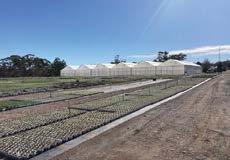
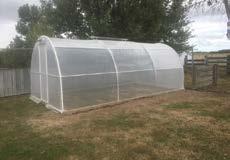

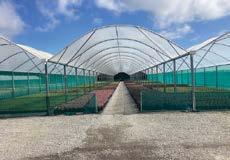
“ANNUAL PRODUCTION IS ABOUT 850 TONNES , WITH FIVE VARIETIES SUPPLIED MAINLY TO LOCAL SUPERMARKETS THROUGH MG”

He says there are several wood pellet suppliers in the South Island but demand is relatively low at present since not many growers have made the switch.
“But should the demand change, the price of wood pellets may increase. Energy is a major cost to growers – especially in the South Island – so a minor increase puts significant cost pressure on businesses.”
Albert believes that to make the investment viable, the Energy Efficiency & Conservation Authority (EECA) could negotiate a price guarantee over the medium to long term with suppliers on behalf of growers who are willing to invest in making the switch from coal to wood pellets.
“Once the decision to switch the boilers over to wood pellets is made, it cannot be easily reversed. Hence, should the suppliers raise the cost of wood pellets too much thereafter, it may put the business in jeopardy.”
While he’s not sure quite how such a scheme might work he says it’s important smaller producers are supported in decarbonising, otherwise only the large-scale operators will be able to make the climate-friendly changes that markets increasingly demand.
“Right now it’s mainly just larger growers who can commit to big infrastructure projects. But for smaller growers, it may not be possible. We have to start small and have a caseby-case basis to really help everybody. Otherwise, over the long run, you’ll be left with just four or five larger growers.”
Since the Shihs started growing tomatoes 22 years ago, the number of fellow growers in New Zealand has fallen by 75 percent and Albert worries that it is becoming impossible for young growers to get into business.
“I work with a couple of professors at Lincoln University and they bring students to the glasshouses and they do seem interested, they ask the questions and say things like, ‘I’ve never seen this before’. They’re interested but how are they going to get started?
Online Orchard Irrigation Supplies
Call our experts 0800 130 905 www.irrigationexpress.co.nz
“You go to a bank and they go, ‘What assets do you have, can you mortgage your house or do you do you have a house?’ People might say, ‘This is too risky, you might lose your money’, but how risky is too risky? We just have to kind of rethink that.”

Cocoa production flourishes as a cash crop for Papua New Guinea’s smallholder growers, however vegetable farming has never been easy in the tropical climate –with implications for poverty and food security.
John Gauldie
To address these challenges, the locals are working with the Papua New Guinea government and Volunteer Service Abroad (VSA) to draw on New Zealand’s horticulture expertise.
Mr Herman Valvalu (pictured right), a grower in Papau New Guinea’s island province of East New Britain, has been collaborating with the Department of Agriculture and Livestock (DAL) and New Zealand’s Volunteer Service Abroad (VSA) to improve agricultural practices among the nation’s majority smallholder farmers. He offers valuable insights into the region’s challenges and potential solutions.

While cocoa remains a significant export crop that brings money into the country, Herman highlights that “there is a problem with vegetable production and food security.”
The heat and humidity make traditional outdoor growing particularly challenging for delicate vegetable crops. Heavy rainfall can cause substantial crop damage. Disease pressure is high, and yield losses are significant without appropriate management techniques.
“Tomatoes grown here are very weak from humidity and stress,” Herman explains. The region experiences two seasons, wet and dry, with extreme conditions in both: “It can get very wet, the soil is very damp, or very dry, the sun is so hot, its stresses the plants.”

Mr Herman Valvalu with cocoa plants – a flourishing cash crop in Papau New Guinea. Mrs Christine Valvalu (pictured below) says access to quality vegetable seed is a major challenge for local growers
The consequences of these challenges are significant. In 2022, PNG imported US$37.6 million worth of fresh vegetables from Australia, many of which could have been grown locally. New Zealand also exports vegetables to PNG, including 2500 tonnes of onions, as well as frozen vegetables and potato products.
Volunteering offers New Zealand growers a unique opportunity to share their expertise in areas such as sustainable vegetable production, soil health, and post-harvest techniques. If you would like to join a growing network of Kiwi volunteers making a real impact in Papua New Guinea’s agricultural sector, and use your knowledge to help local farmers increase their yields, reduce waste, and feed their families with dignity, please contact VSA.
VSA covers accommodation, living allowances, airfares, and insurance, and provides in-country staff to ensure volunteers’ wellbeing throughout their stay. If you are interested, visit www.vsa. org.nz or email volunteer@vsa.org.nz
This price disparity makes nutritious fresh produce inaccessible to many, creating both a public health concern and a missed economic opportunity.
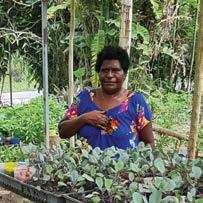
“There is a huge local market,” Johannes notes, with mining companies interested in purchasing fresh produce.
Herman emphasises the need to grow enough fresh produce for local demand instead of importing fresh vegetables, adding that “where there is a mouth, there is a market. There is a big local market, with demand for fresh quality, instead of frozen vegetables from Australia.”
“Fresh fruit and vegetable production, capsicum and tomatoes are very, very expensive,” says VSA programme manager for Papua New Guinea Johannes Gambo. In many parts of Papua New Guinea, access to fresh vegetables like onions, tomatoes, and garlic – the backbone of everyday cooking – is a constant challenge.
“While the country’s Highlands are rich in agricultural potential, the journey from field to market is fraught with obstacles. Poor infrastructure, high fuel costs, and limited cold storage make it difficult to move fresh produce to coastal and urban areas affordably. Families often rely on alternatives like tinned fish, a shelf-stable protein that can be stretched with rice, noodles, or whatever greens are available.”
Herman firmly believes that protected cropping systems offer the best solution to these challenges.
“We need greenhouse farms with a controlled, protected environment,” Herman states emphatically. “I think it’s the only way to increase production.” This approach could transform vegetable cultivation in the region by creating more stable growing conditions.
“Greenhouse production means better quality and uniformly grown produce”, he explains, as it allows growers to moderate crop damage by controlling humidity and providing better airflow.
Rather than envisioning large commercial operations, Herman sees an opportunity for smallholder farmers to adopt affordable protected cropping solutions. “We are thinking about small greenhouses, not mega structures.”
The tropical climate of East New Britain avoids one production input that New Zealand greenhouse growers wrestle with. “An advantage is that you don’t have to pay for heating the greenhouse,” Herman points out, which substantially reduces operational costs.
As a big advocator for fresh, quality produce, Herman believes in ensuring food security and lifting people out of poverty in the province by working in collaboration to train smallholder growers. He says the current situation “is not moving due to lack of knowledge. So we need to train them how to produce the best, how to take more farms to the next level, and build up the capacity of farmers.”
Herman envisions a practical approach to implementing protected cropping systems. “Most growers need a simple training module.” He suggests mobilising communitybased and cultural university resources, using organisations like VSA as a player in training. Crucially, the module needs to be developed locally to be compatible with the environment, the tropical climate and the social aspects.
Beyond infrastructure and technical know-how, access to quality inputs presents another significant barrier, particularly for seed, Herman explains. “We don’t have a breeding centre for vegetables. So there is a big demand for imported certified seed.”
He emphasises the need to “create a controlled environment so that we grow with the optimum use of the seed we have.”
A critical component of implementing protected cropping systems is knowledge transfer. “New Zealand is known as a leading horticulture specialist, known for high productivity,” Herman acknowledges. “Even though there is a big difference in climate, we can use New Zealand’s horticulture knowledge to improve our quality and yields.”
To demonstrate the potential of protected cropping, Herman proposes a pilot approach. “We are looking for a greenhouse grower to train the trainer. We want to learn from New Zealand to improve practices.” He suggests starting with a pilot greenhouse to demonstrate to local authorities the potential of investment.
“We need advice on that, I think it’s the only way to improve production,” Herman states. “The rest will come, but if we don’t try this, well, we don’t know what we don’t know. Let’s develop know-how and structures and see how it will deliver improvements. Nobody has done this, let’s break barriers.”
Johannes agrees that with improved access to quality seeds, knowledge, tools, and mentorship, small-scale growers have the potential to significantly enhance local supply chains and boost food security. “That’s where experienced farmers and horticulturists from New Zealand can make a real difference.”


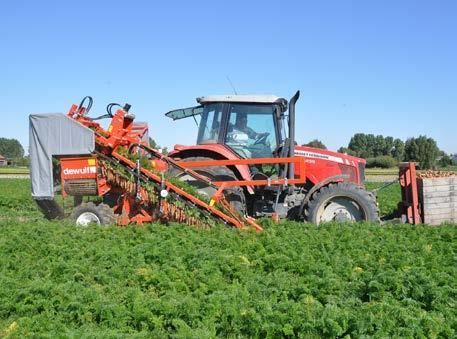


HortPlus (www.hortplus.com)
Could the warming climate influence which varieties of our major fruit crops can be easily grown in different parts of New Zealand? Could some crops be grown in regions with a more suitable climate in future? This month HortPlus shares fascinating insights from 21 years of winter chilling climate data gathered by weather stations in four New Zealand growing regions.
Orchards across New Zealand rely on consistent chill accumulation during the winter months to ensure proper dormancy and subsequent fruit set. But as the climate warms, the number of chill hours (or chill units) crops are exposed to is changing, with potential implications for crop yield, as well as fruit size and quality.
The data from four research-grade weather stations located in Te Puke, Bay of Plenty; Havelock North, Hawke’s Bay; Richmond, Nelson; and Lincoln, Canterbury, shows significant differences and also divergence in trends. While annual chill units have remained relatively high and stable in Canterbury and Nelson over the past 21 years, they have trended down noticeably in Te Puke and Havelock North over the same period.
This need not be cause for alarm at this point because winter chilling typically remains above the thresholds for most fruit in all four regions analysed. However, it may have implications for the kinds of crops and varieties grown in different parts of the country if current trends are to continue.
As the climate continues to change, monitoring winter chill unit data and trends, and adopting adaptive strategies such as the use of dormancy-breaking agents, may also become increasingly important in regions experiencing lower chill accumulation. This is because dormancy breakers can stimulate bud break and flower numbers when winter chill is low, enabling the crops to be productive if dormancy breakers are applied at the right time.
AS
The Richardson Chill Unit (RCU) model works well in New Zealand. There are some nuances, but in broad terms, this model attributes optimum winter chill at 4°C, no accumulation below 0°C, and it takes away winter chill accumulation at 16°C. The table below shows RCU accumulation requirements for normal spring growth for various species, noting differences in requirements for different varieties within some species as well. For example, grapes require less winter chill, allowing them to more easily grow in warmer climates without the need for dormancy breakers, whereas crops such as apples need a cooler climate or help from dormancy breakers.


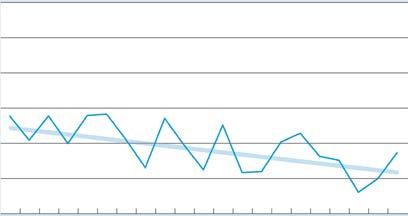

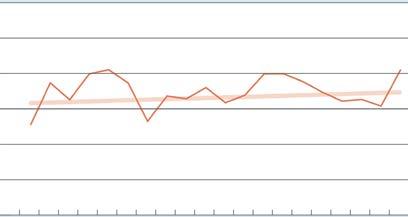
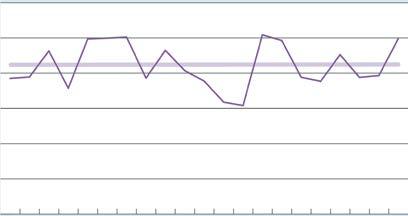
Note: The graphs show total yearly chill units for the winter season (1 May to 31 August) from 2004–2024. They present chill unit records for a single research-grade weather station in each of the four regions. Further analysis, via HortPlus or another provider, may be required to assess the level of variability in winter chill within each of the four regions.
Although the precise speed of climate change continues to be a matter for debate, there’s near universal consensus that the warming climate is a trend that will continue. For New Zealand orchardists, having access to weather stations and accurate chill unit data is likely to be increasingly important, not only for determining whether dormancy breakers are needed, but also for decision making around the next generation of crop to plant on their land.
Acknowledgements
• Mike Barley, HortPlus
• Richard Mills, Summerfruit NZ
• Elaine Gould, PGG Wrightson.

Create & maintain a digital spray plan for your property with SprayPlan Manager.
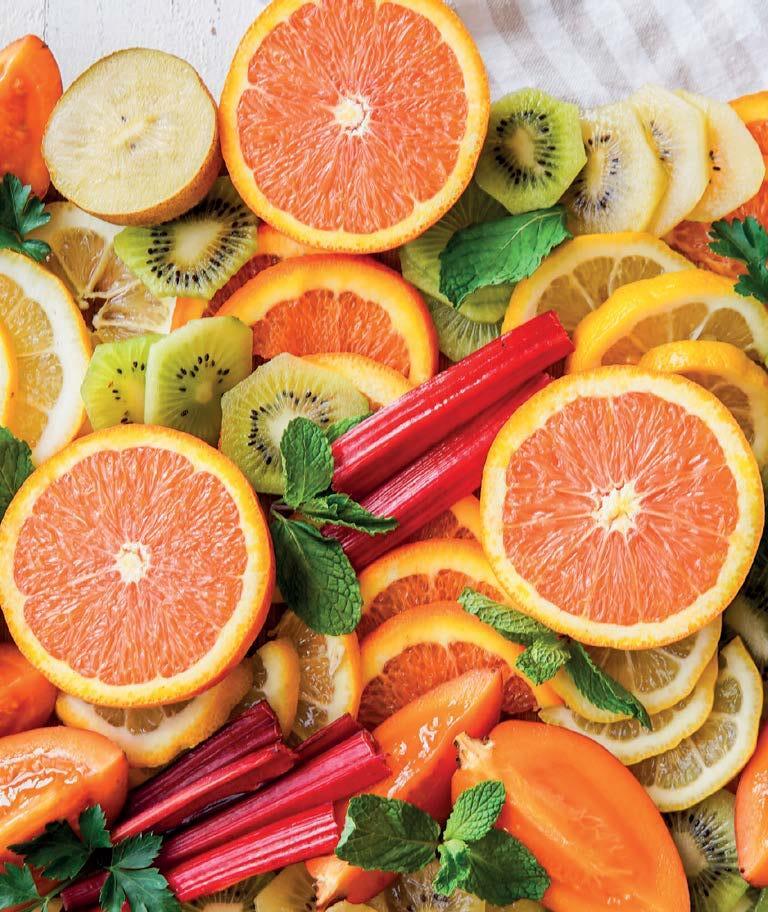
Promoting fresh winter produce benefits both dedicated growers who are eager to boost sales and consumers striving for better health through nutritious food.
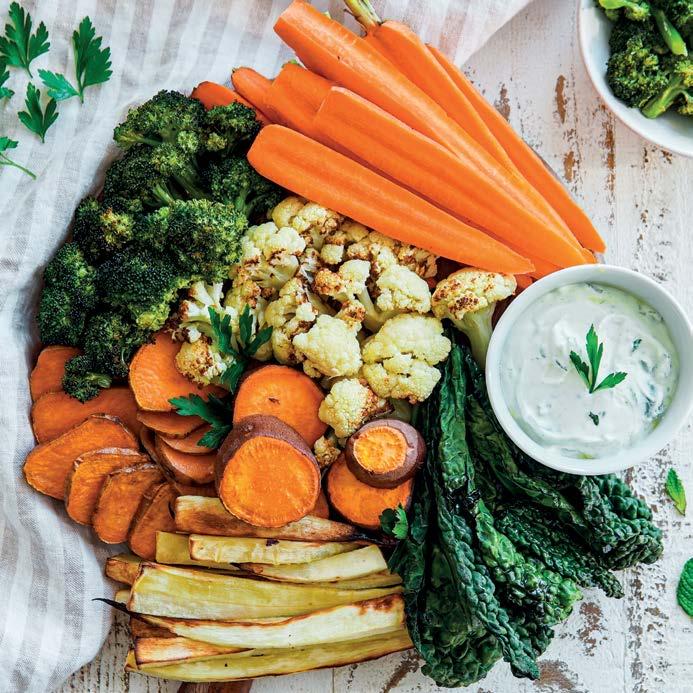
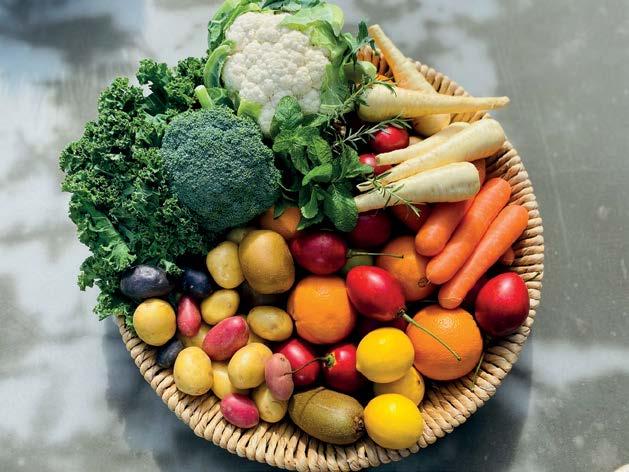
That’s why the 5+ A Day Charitable Trust is excited to support New Zealand growers by promoting winter produce directly to consumers. This month, we are launching a Winter Produce Promotion aimed at showcasing your hard work and delicious seasonal offerings.
Fresh New Zealand grown fruit and vegetables like lemons, oranges, kiwifruit, tamarillos, potatoes, kūmara, brassicas, onions, parsnips and carrots will take centre stage in our upcoming radio and social media campaigns. We’ll highlight new recipes and serving ideas that resonate with current consumer trends, along with engaging giveaways and valuable nutrition information.
the 5+ A Day Charitable Trust.
“Your dedication ensures that we provide the very best fruit and vegetables to the market. Together, we can showcase the health benefits, versatility, and mouthwatering dishes that can be created while winter produce is at its peak.”


Kiwifruit, citrus, tamarillos and brassicas like cabbage and broccoli are excellent sources of vitamin C, vital for immune support during the colder months. Root vegetables, including potatoes, kūmara, carrots, parsnips and onions, offer hearty, nutrition-packed options, perfect for warm, comforting meals on chilly days.
“We are fortunate to have a plentiful supply of high-quality, New Zealand-grown crops that thrive this time of year,” Carmel adds.
The 5+ A Day promotion aligns with broader public health goals to increase the consumption of fresh fruit and vegetables. Currently, only one in four New Zealanders meets the
recommendation of five or more servings of vegetables daily. Research shows a direct link between fresh produce consumption and improved health outcomes, with each fruit and vegetable offering a unique combination of essential nutrients.
“When consumers encounter new recipe ideas for vibrant fruit and vegetables like oranges, kiwifruit and carrots, they are more likely to purchase these products,” Carmel explains. “Winter produce is bright and colourful, providing a fantastic opportunity for 5+ A Day to highlight these health packed products.”
SOCIAL MEDIA: The 5+ A Day winter produce promotion will be active on Facebook, Instagram and TikTok under the @5adaynz handle. We encourage all growers to follow these accounts to keep up with the promotion.
WEBSITE: The 5+ A Day website (www.5aday.co.nz) serves as a valuable resource for information on what’s in season, along with recipes and nutrition details.
MEDIA RELEASE: Our targeted media release will go out to consumer focussed media outlets including print, radio, online and television.
RADIO: Our radio campaign promoting New Zealand grown winter produce will run at peak listening times over nine radio stations with the potential to reach over 600K kiwis a week.
UNITED FRESH PLATFORMS: United Fresh platforms such as Supermarket News, FMCG Magazine and LinkedIn will help leverage the winter promotion.






Let’s work together to promote New Zealand’s incredible winter produce and nourish our whānau and communities!
Follow @5adaynz on socials www.5aday.co.nz
WorkSafe NZ has set restricted entry intervals (REIs) for over 100 pesticides. The majority come into force on 10 June 2025. For this overview of the changes, NZGrower & Orchardist spoke to several grower organisations, grower extension technical experts and WorkSafe.
What is an REI?
A restricted entry interval (REI) is a period of time when people are not allowed in an area where a pesticide has been applied unless they are wearing appropriate personal protective equipment (PPE).
The main obligations for growers responsible for the application are that anybody who enters the application area wears appropriate PPE until the end of the REI. For indoor applications, such as a greenhouse, growers must display signs.
WorkSafe has not specified REIs for all pesticides. Growers can check the product label and safety data sheet or visit the WorkSafe website to find more than 100 substances listed.
REIs are different for different crops, even with the same substance. For example, the REI for pesticide carbaryl is 21 days when used on apples and 12 days when used on strawberries.
Why change now?
REIs were previously set as part of the Environmental Protection Authority substance approval process under the Hazardous Substances and New Organisms Act (the HSNO Act). However, WorkSafe was tasked with transferring the REIs to be the requirements under the Health and Safety at Work Act.
WorkSafe set up a working group including representatives from industry associations (including HortNZ), an agriculture training organisation, manufacturers and grower groups, who were able to bring a grower perspective.
In 2022, WorkSafe consulted on a proposal to set a number of REIs. Many of the REIs are new or differ from those previously set under the HSNO Act approval.
THE HOPE EXPRESSED BY MANY GROWERS IS THAT THE GOVERNMENT WILL TAKE ANOTHER LOOK AT REI s
Figure 1:
Examples of appropriate PPE to use on the parts of the body that may be exposed to pesticide residues

The person responsible for selecting appropriate PPE should consider what parts of the body may be exposed to pesticide residues.
Image: WorkSafe New Zealand, Restricted Entry Intervals for Pesticides – Quick Guide, November 2024
Intervals for off-label use
REIs can only be set for crops specified on the label. For off-label use, growers need to carry out their own risk assessment considering the application and type of crop. WorkSafe says they would expect growers to compare the specified REIs for applications of the same substance on similar crops and pick the longest REI.
...the new rules may leave growers facing an uncertain liability in their decision making on matters often outside their area of expertise
A grower’s own off-label risk assessment does not require approval from WorkSafe, but WorkSafe inspectors may ask to see documentation showing how the grower assessed the risk.
Particularly for vegetables, where off-label use is very common, this self-assessment requirement is a grey area. Overly conservative estimates may not reflect the actual risk and thereby could disadvantage growers for off-label crops.
Pragmatism required
Feedback during consultation identified that guidance was needed to set out in practical terms what an REI means and what is required to manage the risk during the REI period.
Different re-entry activities in the same application area may require different PPE. The appropriate PPE depends on each situation and will be up to the grower to decide. WorkSafe has produced guidelines to help growers understand the new requirements and determine the appropriate PPE (see QR code overleaf).
However, the new rules may leave growers facing an uncertain liability in their decision making on matters often outside their area of expertise. For example, a covered crop grower would need to determine appropriate PPE that balances the risk of toxicity with working in high temperatures that can reach 40°C for extended periods.
For some of the substances and crops that are not specified in WorkSafe’s new set of REIs, some growers have already been setting their own interval periods in their spray programmes based on overseas labels. This pragmatic approach demonstrates that many growers do see the need for REIs and share concerns about the safety of their workforce – which often includes themselves and their families.
Concerns raised and WorkSafe’s responses
Following WorkSafe’s consultation, HortNZ acknowledged the agency’s genuine engagement with industry and transparency in how WorkSafe arrived at their standards. However, growers raised some concerns after decisions were made on REIs.
Some growers questioned the necessity of REIs for applications that leave no residue on foliage, since REIs are calculated based on spraying the foliage with the pesticide.

Any board member, affiliated organisation or active grower member wishing to have a matter considered at the AGM must give notice in writing to the Chief Executive of Horticulture New Zealand (email to: kate.scott@hortnz.co.nz) of the notice of motion no later than Tuesday, 8 July 2025 at 10am. Notices should include the wording of the motion to be voted on and up to one A4 page of explanatory notes. Notices of motions will be listed on Horticulture New Zealand’s website www. hortnz.co.nz on Wednesday, 16 July 2025 and will feature in the NZGrower & Orchardist magazine (August issue).
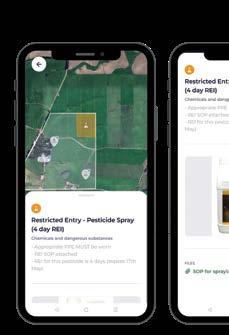

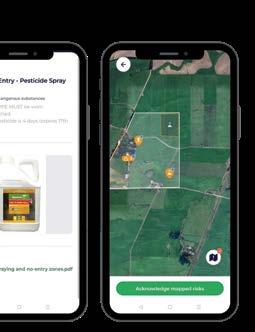
Growers can use digital solutions to manage site access approvals and streamline compliance. For example, with the Onside platform, when your workforce – employees and contractors – as well as visitors check-in with the app, they will receive instructions for temporary restricted access and PPE requirements.
Guy Davidson, Head of Customer at Onside, says the Onside platform can include an automatic expiry date and time that aligns with the REI. “When a user sets up information on the risk, it can also be set to be automatically removed after the required period, such as in 4 days’ time,” he says. “The app also creates a clear digital record of risk communication that can be used for future reporting and compliance.”
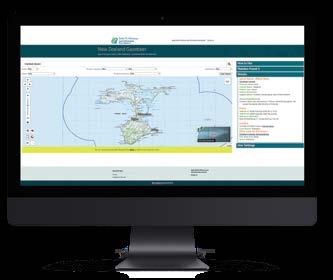

WorkSafe is currently consulting on possible changes to the requirements for pesticide applications where there is no residue on foliage, for example pre-emergent sprays or pesticides applied through a drip or sub-surface irrigation system. The updated guidance is underway at the time of writing and, once finalised, will be published on WorkSafe’s website.
Some growers wondered why REIs are longer than preharvest withholding periods. WorkSafe’s response is that toxicity is related to the amount of exposure. The potential exposure from contact with foliage that has pesticide residues on it when working in an application area for a full day is significantly higher than from eating, for example, a few apples a day.
Another concern for growers is how to communicate REI periods. Particularly for growers with large workforces including contractors and multiple crops over multiple leased blocks, it will be a challenge to manage compliance with quickly changing protocols for each site.
There was a high level of concern from industry about the data used to calculate the new REIs. Some growers felt that the process was reinventing the wheel and coming up with REIs that don’t align with those mandated in comparable international jurisdictions.
Growers also spoke about being on the receiving end of rules from multiple government agencies that can seem incoherent. Growers pointed out that some REIs are for substances that are obsolete in other countries, but still relied on by growers in New Zealand because better products overseas are not available in New Zealand. A new REI may effectively eliminate a certain tool for growers, without providing a better alternative.
While the government’s recent Agricultural and Horticultural Products Regulatory Review set recommendations to address some of the causes of the slow approval path (including increasing the reliance and use of assessments by international regulators), the current introduction of new REIs for pesticides offers no relief to the mounting compliance headache that growers face.
The hope expressed by many growers is that the government will take another look at REIs. As one grower put it: despite government promises of reform, this is another case when growers just have to scratch their heads and get on with it.

For further details, visit the WorkSafe website: www.worksafe.govt.nz or download the guidelines by following the QR code

As the government proposes new regulations on producers and importers of regulated plastics, Horticulture New Zealand has filed a submission in support of a national farm plastic recycling scheme that works for growers. For NZGrower & Orchardist, Agrecovery’s chief executive TONY WILSON outlines the proposed regulations and how the not-for-profit initiative’s plastic recovery scheme works.
Plastics have become an essential tool for growers across New Zealand. Whether it’s agrichemical containers, fertiliser bags, growing media packaging, or protective crop covers, plastics are deeply woven into the day-to-day operations of horticulture businesses. Their light weight, durability, and ability to protect valuable products make them hard to replace.
Yet plastics pose a significant environmental challenge once they are no longer needed. Their end-of-life impact is now under the spotlight – and for good reason.
New Zealand is moving towards a regulated approach to managing these materials. The Ministry for the Environment
has proposed regulations that will require producers and importers of horticultural plastics to join an accredited product stewardship scheme through Agrecovery.
The anticipated changes mark a major shift for the industry, but growers will still be able to drop off their farm plastic recycling, the same way they do under Agrecovery today.
The government’s proposal opens the door to stronger recycling systems, better traceability, and new ways to demonstrate sustainable practices to increasingly demanding markets. All while sorting out the problem of plastic waste on-property.
Until now, responsible disposal and recycling of plastics have largely been left to voluntary programmes. While many growers have actively supported recycling efforts through initiatives like Agrecovery, the system has not been universal. Some plastic-producing brands contribute a voluntary fee to support recycling services, while others do not. This “free rider” problem creates an uneven playing field, limiting the funding and reach of recycling programmes.
The new regulations aim to level the playing field. By making stewardship participation compulsory, all producers and importers of regulated plastics will need to support the recovery, recycling, or safe disposal of their products, allowing the farm plastic recycling system to be more financially sustainable.
For growers, this means expanded access to reliable recycling services, more consistent coverage across regions, and greater confidence that when plastics leave their property, they are genuinely being recycled – not ending up in landfill, waterways, or stockpiles. And in the near future, a complete solution for all your plastic waste.
The scope of the proposed regulations is broad, covering many of the plastics growers deal with daily, including:
• Plastic agrichemical containers and drums (up to 1000 litres)
• Bale wrap and silage sheet
• Small plastic bags (under 40kg) — including those for seed, fertiliser, soil amendments, and growing media
• Large grain and fertiliser bags (bulk PP bags).
The recent consultation process also flagged additional plastics commonly used in horticulture that are likely to be considered for regulation once the initial scheme is up and running. These include:
• Irrigation piping
• Shrink/pallet wrap
• Tunnel house covers
• Plastic plant pots
• Hail netting and other coverings.
While these products are not included in the first wave of regulation, the Ministry for the Environment has signalled that they will remain under active review. As systems mature and capacity builds, growers can expect to see stewardship obligations progressively extend to cover a wider range of plastics used across orchard and covered cropping operations.
This longer-term approach recognises the complexity of on-property plastics and aims to ensure that all high-volume and high-risk plastics are eventually addressed, without overwhelming the industry in the short term.
While alternatives like paper bags or compostable plastics are sometimes seen as more sustainable, they come with trade-offs. Paper bags, for example, often use more water, more energy, and produce more greenhouse gases during manufacturing, while compostable plastics typically need strict industrial composting conditions that aren’t widely available in rural areas. For now, recycling conventional plastics through accredited schemes remains the most practical and scalable solution for most growers.
Agrecovery is helping growers manage these plastics more sustainably by providing a national network of collection sites, on-orchard pick-up services for bulk volumes, and access to detailed Activity Reports that document recycling efforts.
These Activity Reports have become an important tool for growers who need to verify their environmental performance to international markets. With overseas retailers and consumers demanding credible proof of sustainable production, having a detailed, audited record of plastics recycled through an accredited New Zealand scheme is shifting from a value-add to a baseline requirement.
The fee system proposed under regulation will play a critical role in sustaining these services into the future. Rather than relying on voluntary contributions, a small stewardship fee included in the price of regulated products will ensure that recycling programmes are consistently funded. Because this fee is already paid to Agrecovery by many plastic producers, the cost to growers is already included in the cost of products they purchase, like agrichemicals. A mandatory fee creates a stronger, fairer system where all brands and users contribute equally, allowing services to grow and adapt over time without risking service gaps. Growers will not be charged a separate fee at the point of recycling.
Growers often ask where plastics go after they are dropped off. Wherever possible, Agrecovery ensures plastics are processed within New Zealand, supporting local industries and circular economy goals. Rigid plastics like agrichemical containers are shredded and pelletised into products such as underground cable cover and agricultural piping.
Soft plastics, including those collected through Agrecovery’s small bags scheme, are currently exported to approved recycling facilities overseas, as no domestic processing option exists at scale.
These exports are tightly controlled and fully compliant with the Basel Convention, the international agreement that governs the trade of waste materials. Under this framework, Agrecovery must demonstrate that materials are sent only to facilities that meet strict environmental and ethical standards, and that the plastics will be genuinely recycled, not landfilled or incinerated. All exports are authorised by the New Zealand Environmental Protection Authority and are transparently reported.
Transparency is central to an accredited product stewardship scheme. Growers using Agrecovery can be confident that plastics are managed responsibly – with traceability from drop-off to final destination. In a world where sustainability claims are increasingly scrutinised, this level of assurance helps New Zealand growers stand behind their practices with credible, auditable data.
For growers, the good news is that Agrecovery services will only become more comprehensive. If the regulations come into force, you can expect:
• More brands contributing – meaning more of the products you buy will have easy recycling pathways
• Expanded collection services – covering a wider range of plastics and making it easier to recycle them responsibly
• Verified reporting – access to evidence-based reports for sustainability claims and audits.
Small stewardship fees may be incorporated into the price of more products than at present, but the trade-off is a fully funded, reliable recycling system that benefits the whole sector.
Momentum is building for more responsible plastic management, with sustainability and traceability now essential to horticultural production. Growers recycling through Agrecovery are well placed to meet these expectations — and you don’t have to wait for regulation to act.
Agrecovery offers a user-pays recycling service with accreditation reporting. As a not-for-profit, we’re here to help. To get started or learn more, visit www.agrecovery.co.nz
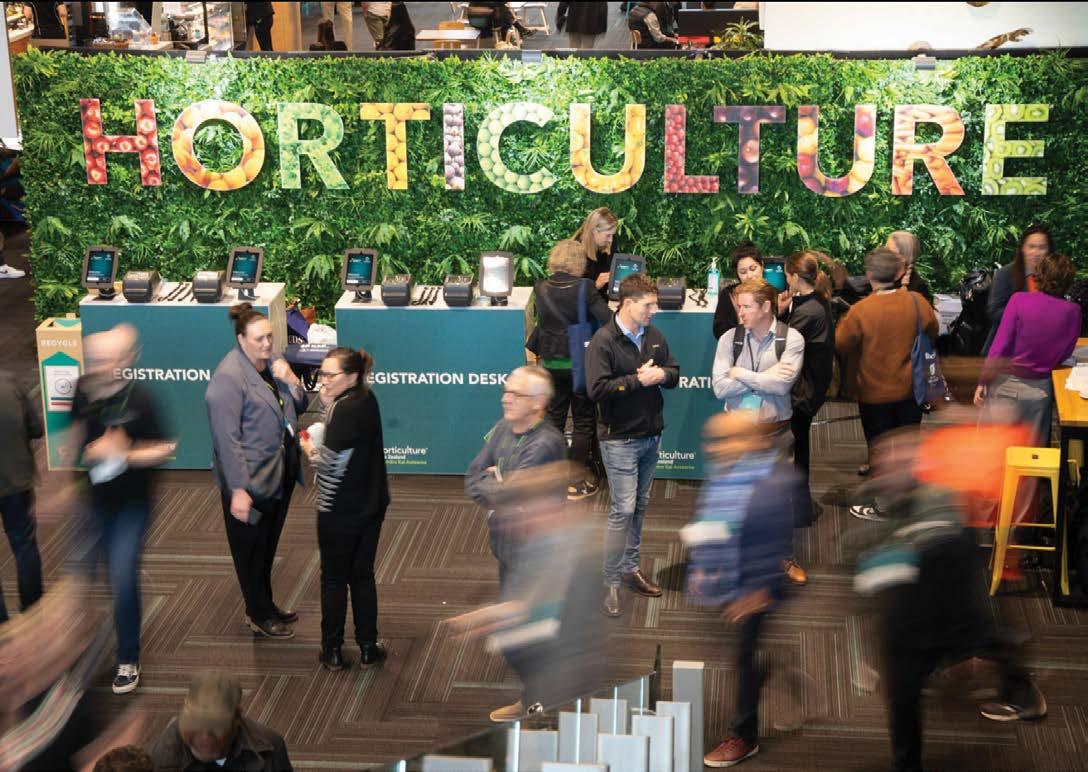


A new cultural indicator tool is being developed in Pukekohe as iwi and the horticulture industry work together to improve our waterways. HELENA O’NEILL talks to Edith Tuhimata about her passion project and why this tool is so important for communities as well as the environment.
Edith Tuhimata is one busy woman. For the past 30 years the archaeologist has been working in the environment sector, and more recently has been part of the discussion with growers around the wider Pukekohe area to improve the land and waterways.
Her role is with Ngaati Tamaoho as Kaitiaki Taiao Matua, or senior environmental lead.
“We’ve spent three years sitting in the room with growers and iwi Ngaati Te Ata, Ngaati Tipa, Ngaati Tamaoho, and Waikato-Tainui was in there in an advisory capacity. Three years of negotiating with the growers how to heal our land,” Edith says.
“That’s their bread and butter, that’s our food source for the whole of New Zealand. There were some really tense conversations there… and quite a few times when I suggested it was cup of tea time,” she laughs.
A key aim of Edith’s is to figure out what mechanisms could be put in place to improve the system and help improve waterways and growing areas.
“We started off by completing the integrated management plan for the Pukekohe catchment, all the way around from Bombay to the Manukau Harbour.”
A SIMPLE WAY TO ASSESS A WATERWAY USING THE THINGS THAT WERE IMPORTANT TRADITIONALLY , AND GROUNDED IN GOOD SCIENTIFIC INDICATORS
Horticulture New Zealand senior environmental policy advisor Leanne Roberts has been working with mana whenua and growers in Pukekohe for a few years.
“There was a process called the Pukekohe ICMP [Integrated Catchment Management Plan] that went for a number of years,” Leanne says. “Sometimes really confronting and challenging discussions between mana whenua, growers, regional council, central government and industry – the outcome was the creation of a wonderful Pukekohe Action Plan. The result of that process was the formation of Te Tautara o Pukekohe,” Leanne says.
Te Tautara o Pukekohe is governed by representatives from Ngaati Te Ata, Ngaati Tamaoho, Ngaati Tipa, Horticulture New Zealand, and Pukekohe Vegetable Growers Association.
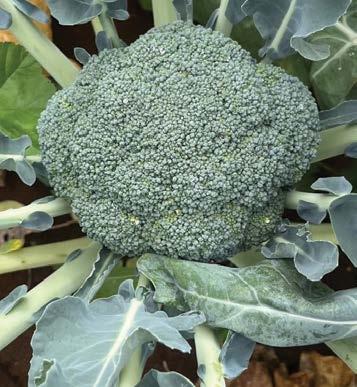
On its website, Te Tautara o Pukekohe says the fertile, friable soils and benign local climate have made the Pukekohe area famous for its ahuwhenua (vegetable growing). Over generations, the Pukekohe catchment has supported the vegetable growing enterprises of a diverse collective of cultures, feeding people with fresh and healthy kai.
Today the area is strategically important for growing fresh vegetables and maintaining food security for New Zealanders. Over time, long-term trends in water quality degradation have been recorded in freshwater flowing within and from Pukekohe.
In November 2021, Sustainable Land Use Ministers approved a multimillion-dollar investment in the Pukekohe SVGA (Specified Vegetable Growing Area) and the catchments of all wai (water) flowing from the area (the Project Focus Area) from the Essential Freshwater Fund (EFF) to fund the development of Mahia te Maheretanga –Te Ora o Te Wai: Pukekohe Action Plan
Edith says even with changes in our growing systems, rehabilitating the land will take 30 years.
“One thing I’ve always thought about is our waterways, all the waterways in this catchment are centred on those growing areas being up the top and everything else going down towards the Manukau Harbour.
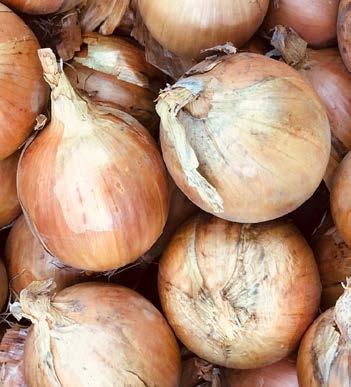

New clubroot tolerant, warm season harvest addition to our broccoli range. High firm dome. Suits fresh cut or trimmed, easy to peel. Uniform maturity with a high % first cut. Outstanding clubroot tolerance produces clean, strong plants.
With maturity similar to PLK types, Titan is very uniform and has the ability to produce excellent yields due to its strong vigour. With good skin retention and three good skins, this onion has excellent shipping and long storage capabilities.
Early-mid-late season variety. Strong plant, good foliage. Good husk cover, excellent green flag leaf. 20cm cob with slight taper and excellent colour. Great flavour. Easy pick. In warm regions sow early-mid Sep to late Dec for harvest from late Dec to Feb. HR; CR, MDMV & NCLB.
“I really thought about a way or mechanism so we could test it ourselves. We could challenge the growers to do better along with ourselves and developers.”
The cultural indicator tool developed by Edith is simple, she says.
“It’s basic, about four pages on an iPad. You just click on it, answer the questions, and then you’ve got your research component. I just wanted it to be simple, no hard thing about it, so that our people can go out to our own lands and do it themselves.
“It’s not only me using the water indicator; I gave it to my cousins at Ngaati Tipa who are doing 21 waterways on the Onewhero side of the Waikato River. Myself, I am doing the interior from Bombay to Pukekohe, all the way down to the Manukau Harbour. My cousin Roi with Ngaati Te Ata, he does the West Coast side of it down the Āwhitu Peninsula. I was trying get the best bang for our buck. But the findings we’re getting out of the three areas are huge.”
Speaking at the inaugural Vegetables Big Day Out hosted by Te Ahikawariki back in March about the cultural indicator tool, Edith was surprised by the interest shown by growers and the industry.
“They have been really enthusiastic about it. There were some good, articulate questions that some of the young landowners asked me – I had to really think about it because you have to remember the indicator is in its infancy. But it’s probably the only indicator that has a true collaborative component to it – the scientific world does its bit and we do our bit, and the outcome of that is awesome.
“When growers have seen it, I’ve had feedback that it’s amazing and ‘I could use this, this is brilliant’. For me, I just looked at it and it’s such a good time marker and legacy, designed in such a way that Edith’s children and grandchildren could pick this up decades from now and get this amazing picture about what has been going on and what the improvements have been in freshwater over that time.”
Leanne says users should be able to pick that up, use it, analyse it, and get a really good sense on where something has come from.

Te Tautara o Pukekohe Trust manages funding to priority projects on behalf of the Ministry for the Environment towards the vision of a healthy freshwater environment flowing within and from Pukekohe, while supplying fresh vegetables, as detailed in the Te Ora o Te Wai action plan.
“We’ve seen the most beautiful, unintended benefit where there has been this closeness from the young people coming through, connection with the environment and kaumātua kuia coming through and telling the stories of the place. A real community benefit is that people are becoming more aware and connected with their place and space.”
For Edith, her role means she is balancing two world views which don’t always align.
“There’s a bit of hype about it now. I said I was going to do a whenua one, a cultural indicator to test the land, and then the growers sort of took me up on that. Now we’re doing the whenua one just to keep the growers on point.”
Leanne says she has been through the tool a couple of times, and says it’s amazing.
“When you look at it, simplicity doesn’t do justice to the thinking behind it. From a user perspective when you look at the tool, it gives you a really simple way to be able to look and assess a waterway using the things that were really important traditionally, and it’s been really grounded in some good scientific indicators.
Photo courtesy of Te Tautara o Pukekohe Trust
“I’m stuck between the two worlds – the environmental knowledge and the cultural knowledge. To bring up the understanding of Mātauranga Māori in my scientific world is really important because we are scientists in our own right as well.”
Mātauranga Māori refers to the knowledge, wisdom, and understanding within Māori culture, encompassing traditional practices, cultural values, and worldviews.
“The one thing that binds us all together is the love we have for our people, the love that we have for our land, and the love that we have for our waterways. It’s the one thing that makes a difference … to give their grandchildren something better.”

Advances in molecular diagnostics are transforming how we detect soilborne pathogens like Phytophthora. Faster, more sensitive testing could mean earlier intervention and better disease management for New Zealand’s growers.
Associate Professor Monica Gerth : Victoria University of Wellington
Soilborne pathogens are a persistent challenge for horticulture in New Zealand and worldwide. Among these, Phytophthora species are particularly problematic due to their ability to infect a wide range of plants, causing root rot and dieback diseases.
These pathogens are remarkably resilient, surviving in plants and soil as oospores – thick-walled, dormant spores that can survive until conditions favour infection. Globally, these microscopic foes are responsible for billions of dollars in crop losses, and New Zealand growers are no exception.
But what if we could detect (and treat) these pathogens quickly and accurately, before they cause significant damage?
About the team and project
My research group in the School of Biological Sciences at Victoria University of Wellington is interested in understanding how plants and microbes interact, and how this knowledge can be applied to develop practical and effective tools for managing plant diseases.
This particular project grew out of our ongoing efforts to develop effective treatments for Phytophthora diseases. We realised that without a reliable and quantitative diagnostic, it was difficult to evaluate whether a treatment was truly effective, or if a lack of disease symptoms was simply due to the pathogen being present at low levels (or not at all) on a particular plant. This need for robust diagnostics inspired our work on rapid, sensitive, and quantitative DNA-based detection methods for Phytophthora

A soil sample is placed in a mesh ‘teabag’, concentrating any spores into a small pellet. DNA can then be extracted using low-cost and portable equipment, such as a Bento Lab. The sample is then analysed. The entire process takes only a few hours and can be adapted for other sample types, such as plant material
While our initial focus was on protecting iconic kauri forests, we believe this technology holds promise for horticulture across New Zealand. Understanding how these pathogens persist, spread, and respond to management is critical for effective disease control.
Why Phytophthora diseases are so challenging Phytophthora species are among the most destructive plant pathogens globally. In New Zealand they threaten both native ecosystems and crops. For example, while P. agathidicida devastates kauri, P. cinnamomi threatens avocados, P. capsici attacks vegetables, P. infestans infects potatoes, and P. fragariae targets strawberries. Their ability to persist in soil as oospores, lying dormant for years, makes them especially difficult to control.
Traditional detection methods, such as soil baiting, are slow and often miss these hidden spores. Baiting involves placing susceptible plant material in soil samples and waiting weeks to see if disease develops – a timeconsuming, expensive and often unreliable process, especially when oospores are dormant.
To overcome the limitations of traditional detection methods, we turned to PCR (polymerase chain reactions). This molecular technique amplifies tiny amounts of DNA, enabling the detection of even a single pathogen in a complex soil sample. PCR acts like a molecular photocopier, rapidly generating millions of copies of a DNA sequence unique to the target pathogen.
Our PCR-based method (see process diagram above) isolates and amplifies Phytophthora DNA from soil or plant material, delivering results within a single day, far faster than the weeks or months required by conventional techniques. We also made key advances in concentrating

small, round dots inside the root are Phytophthora oospores –special survival spores made by the pathogen
spores from soil (using ‘teabags’), extracting DNA from these tough spores, and identifying the pathogen based on its unique genetic signature.
In field trials in kauri forests, our test detected the pathogen in 69 percent of soil samples, compared to just 11 percent using standard baiting methods. Notably, our approach also costs about one-third of existing methods. This significant improvement in sensitivity, speed, and affordability enables earlier and more reliable detection, which could provide growers and land managers with a valuable advantage.
Beyond yes or no: quantitative detection for smarter decisions
Our diagnostics can do more than just confirm the presence of a pathogen, though; we can also measure the amount of pathogen in a sample, providing quantitative data. This lets us track how pathogen levels change across blocks or seasons, revealing disease hotspots and guiding targeted interventions.
This quantitative data is also invaluable for evaluating the effectiveness of treatments. After applying a treatment (such as phosphite for P. cinnamomi), follow-up testing can show whether pathogen levels are dropping as expected or if additional action is needed. This feedback loop helps refine management strategies, preventing unnecessary chemical applications and saving both time and resources.
Looking ahead, quantitative diagnostics could help establish economic thresholds for action, similar to those used in pest management. Rather than relying solely on visible symptoms or routine schedules, growers could use solid data to determine exactly when to intervene, supporting more sustainable and evidence-based decision-making.
OUR TEST DETECTED THE PATHOGEN IN 69 PERCENT OF SOIL SAMPLES , COMPARED TO JUST 11 PERCENT USING STANDARD BAITING
Although our method was initially developed for P. agathidicida, the underlying technology is highly adaptable. Our next step is to apply it to other significant Phytophthora species affecting horticulture, such as P. cinnamomi in avocados and P. fragariae in berries. The same principles can be applied to citrus, ornamentals, and other crops vulnerable to Phytophthora pathogens.
A key advantage of this approach is its practicality. The PCR-based assay can be performed with compact, affordable and portable equipment (about the size of a briefcase), making on-site testing a realistic option. Our integrated protocol allows multiple samples to be processed in parallel, with results available on the same day. This combination of speed, sensitivity, and scalability marks a significant improvement over traditional methods.
While no single tool can address every plant disease challenge, integrating quantitative molecular diagnostics into disease management offers a promising path forward. These methods empower growers to monitor pathogen levels, assess treatment effectiveness, and target interventions with greater precision.
By developing rapid, sensitive, and quantitative diagnostics, our goal is to help New Zealand’s growers stay ahead of soilborne threats, fostering healthier crops and more resilient orchards for the future.
We are eager to collaborate with growers and industry partners to adapt and refine these tools for a wider range of crops and pathogens. If you are interested in collaborating, please get in touch with us at monica.gerth@vuw.ac.nz
Funding: This research has been made possible through the much-appreciated support of Tiakina Kauri (part of the Ministry for Primary Industries), and research grants from the Ministry of Business, Innovation and Employment.


Almost a year ago, the roadmap for a $1 billion premium cider industry with over 2000ha of cider orchards featured in NZGrower & Orchardist. Since then
Cider Apples NZ co-founders Allan White and John Powell report that investment is picking up. JOHN GAULDIE sat down with Havelock North-based Allan to get a taste of the developing premium cider industry.
Is the roadmap attracting enough capital to get specialist cider apple growing off the ground?
The initial government funding was great in enabling two guys who had no resources to start something. So that’s a positive example of the way in which government investment can enable things to happen. But it was funding from both government and industry, with support from the Ministry for Primary Industries Sustainable Food and Fibre Futures fund, AGMARDT, Fruit Wine & Cider Makers Association NZ, Prevar, Plant & Food Research and Cider Apples NZ. Good progress has been made since the release of the report. Morning Cider in Auckland has embraced the roadmap and just completed a $500,000 capital raise to help fund development of premium cider export sales.
That’s all on the back of ciders that come from the varieties that have been talked about in the roadmap.
We’ve got four other companies that are similarly looking to expand their production up to around about a million litres, which is what we think they need to have to sustain an export industry. So that’s five existing cideries. So it’s happening.
At Cider Apples NZ we did some capital raising, which wasn’t too painful. We also managed to get Callaghan Innovation grant funding, which is very generous. A major expansion of the Accelerated Cider Apple Breeding Programme from 4000 trees to 12,000 trees is underway and will be completed by September 2026.

Why is new cider apple variety development so important?
Traditional cider apples are usually varieties developed over 100 years ago in Northern Europe, when the climate was significantly cooler than it is today. They suffer from low productivity, poor climate resilience, poor resistance to disease and pests, and a flavour profile that can be challenging in many of the markets that have the potential to drive global growth.
Premiumisation in the cider industry will be driven by new varieties of cider apples that produce exciting new styles of cider, with unique flavour profiles, and more global consumer appeal that cannot be easily replicated in other countries.
Cider Apples NZ has identified five new cider apple varieties through screening apples from Prevar, Plant & Food Research and other breeding programmes.
We’ve got to get enough production though, that’s the thing. We are seeking interest from growers and cider makers in the first three of these varieties.



What is the economic case for growing premium cider apples given strong demand for premium eating apples?
I know cider makers who are paying $0.60/kg for orchard run Braeburn. But we’ve talked with people in Europe and other countries and there is quite a premium paid for specialist cider apples as opposed to reject eating apples. In the United States cider makers are paying over US$1 per pound for the specialist cider apples (approx. NZ$3.75/kg). So we set the price in our economic evaluation on the conservative side of $1/kg. And we also picked the yield at 80 tonnes per hectare, which is again conservative. So it’s pretty compelling.
The limitation is always going to be on getting people making and exporting cider to buy into the game. But it seems to be happening. They’ve got to look at how they guarantee supply of these apples. So that will hopefully translate into contracts being offered to growers.
And we’ve got growers now who are wanting to invest in planting – there’s one in the Horowhenua. So it’s starting to build momentum from within the existing cider industry.
The roadmap identified China as a key export market for premium cider. How confident are you that this market will develop?
Cider is not consumed a lot at this stage in Asia, but it is growing. We know the market prefers a high quality dry cider. We have some key importers in China who have invested in New Zealand’s cider industry and they are pretty excited about the prospects of cider in China.
We are setting up a consumer behaviour trial in China later this year with the small scale precommercial ciders made from this year’s crop of a range of new cider apples. That should help us to build up a detailed understanding of Chinese consumer preferences for different elements of a premium priced cider. That information will feed back into cider apple selection criteria for the Cider Apples NZ breeding programme. It should give us a lot of confidence around the sort of prospects that we would have in China.
We find the best way of convincing people about the opportunity is to give them some premium cider to drink. And then all rational discussion goes out the window. It’s exactly the same as with my experience with premium apples. You give somebody an Envy™ apple and they immediately get what it’s all about.



harvester. Source: Weremczuk Agromachines
How does growing a cider apple differ from growing an eating apple?
We think that the approach to growing cider apples is very similar to growing fresh apples except that there are reasons not to go into the elaborate 2D type trellis systems. One of them is mechanical harvesting, which is economically a no-brainer. Fresh fruit growers say, “Look at all the damage to the fruit,” but if you’re going to be processing it within a few days, then it’s not an issue. And when it comes to thinning and pruning as well as harvesting, the opportunity for mechanisation of all those activities is brilliant.
There’s less risk – you’re not so worried about skin finish problems like from hail damage. Some of the varieties that we’re proposing will have a high level of tolerance. So there’s the opportunity to reduce your inputs. Some of these cider apple varieties grow well in marginal areas that are not current centres for fresh fruit production, like Horowhenua or Wairarapa. One of the disincentives for developing fresh fruit in those regions is the lack of the infrastructure that’s required, like cool storage, but that’s not such an issue for cider.
But processing is a consideration that needs to be looked at. Fresh apple juice, like fresh grape juice, has a very short shelf life. It has to be processed within six or eight hours. So apart from the existing cideries and the big apple juice processing plants, like Profruit and Cedenco, we see an opportunity for winemakers to diversify.

It has been suggested that the Fruit Wine & Cider Makers Association NZ expands into apple growing with a commodity levy. What is the best set-up for industry good leadership for cider apple growers?
Right from the beginning, we’ve talked with grower industry good bodies and you know, the short answer is processing fruit is not part of their mandate.
It’s something that John and I have not wanted to get dragged into too much, the debate around how an industry infrastructure should be developed. John and I are a private company. We’re not the industry. We’re breeding the apples, we’re identifying apples that will make high quality ciders.
But when you start digging into it, cider relies on the systems that have been set up by the fresh fruit industry. There are things like spray diaries, for example. And cider makers rely on assurance programmes developed for fresh fruit. The issues range right through from production, varieties, markets, infrastructure to excise tax.
I think there is a value in having industry bodies, certainly from a lobbying point of view and from an identity point of view. So it is a discussion that needs to be had.
For more about cider and to download the Premium Cider Industry Roadmap Report, visit: ciderapplesnz.com
Throughout June, the 2025 Young Grower of the Year competition continues its nationwide search for exceptional horticulture talent. With the regional events in Central Otago, Pukekohe and Hawke’s Bay already behind us, the spotlight now shifts to upcoming contests in Nelson and Bay of Plenty.
Congratulations to the Central Otago, Pukekohe and Hawke’s Bay winners and all the growers who turned out to support their local talent. We’ll share the results of all the regionals in an upcoming issue of NZGrower & Orchardist.
The Tasman region takes its turn on 19 June when Nelson hosts its regional competition.
The Tasman event is followed by Bay of Plenty on 27 June, where growers will help celebrate the region’s milestone of two decades of the Young Grower of the Year competition nurturing horticultural excellence.
For growers, these events and evening galas are popular as a break from the orchard and farm and a chance to catch up with the community. Supporting staff participation also delivers concrete benefits beyond simple goodwill. The investment frequently returns dividends through enhanced skills and motivation.
After Nelson and Bay of Plenty, the competitive calendar continues with Canterbury on 10 July and Gisborne on 17 July before culminating in Christchurch on 11 September, where regional champions will vie for the national title and $10,000 prize package.
For more details and to secure your gala dinner tickets, visit www.younggrower.co.nz


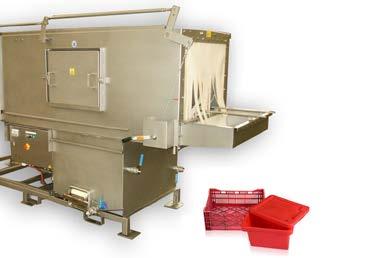


In the space of two decades, horticulture export value (FOB) to Viet Nam has rocketed from under a million to almost $200 million. Despite muted trade last year, expectations for 2025 and subsequent years are high – not just for apples and kiwifruit, but also for a range of crops including new entrants buttercup squash and strawberries.
John Gauldie
Viet Nam has a population of more than 100 million people and is now the fastest-growing economy in Southeast Asia. Liz Bell, executive director of the ASEAN New Zealand Business Council, says the market has gone “from strength-to-strength” over the past 20 years, with the middle-to-high income consumer group growing considerably. Infrastructure in-market (from the port into the retail environment) is developing at pace.
Interest in Viet Nam is increasing, Liz says, spurred on by the recent trade delegation led by Prime Minister Christopher Luxon. “High level engagements are pivotal in driving economic growth, increasing trade opportunities, and expanding investment avenues.”
The Prime Minister was on hand during the delegation to see memoranda of understanding (MOUs) signed with Golden Bay Fruit, Bostock, Mr Apple, T&G and Freshco. The agreements aim to increase imports and develop brand marketing with some of the largest distributors and retailers in Viet Nam, including WinCommerce, Bách Hóa XANH, Tony Fruit and Biovegi.
Viet Nam is New Zealand horticulture’s eighth largest market, but the second largest importer of New Zealand apples, behind China, according to the 2024 Barriers to our Export Trade report published by the Horticulture Export Authority.

Zespri’s KiwiBrothers campaign launched in 2020 in Viet Nam, including point-of-sale displays across major supermarkets and stores
Apples are by far New Zealand’s leading crop exported to Viet Nam – approximately 50,000 tonnes. Last year pipfruit production challenges since Cyclone Gabrielle weighed on market supply. However, 2025 marks a return to form for apple production, coupled with renewed focus on developing strong distribution partnerships in Viet Nam.
The strong demand from Viet Nam’s consumers for premium apples is currently driven by Envy™ and Dazzle™ as well as Jazz™, Rockit™ and Koru™. Viet Nam is also seen as a key launch market for new varieties like Sassy™.
T&G says it supplies 19 percent of all apples imported from New Zealand.
“Over the last five years, our premium Envy branded apples have grown significantly in market share, and today, with 40 percent of the segment, it is the leading premium apple brand in Viet Nam,” says T&G Global’s chief executive, Gareth Edgecombe, noting that 70 percent of Viet Nam’s Envy apples are grown in New Zealand.
T&G’s MOU with WinCommerce aims to increase sales of Envy by 50 percent over the next two years by increasing ranging in the majority of WinCommerce’s nearly 4000 stores, along with enhancing investment in promotions and sampling to connect more consumers with Envy branded apples.
Dazzle is a Fruitcraft NZ variety and manager Steve Potbury says they have plans in Viet Nam this year for consumer events in market, sports sponsorships, and retail events with sampling.
“Dazzle has become the go-to apple for the fit and active apple consumer,” he says. “Over the last few years Dazzle has powered Fuel Up stations in parks, and appeared at a number of running events. Our exporters support retail programmes with packaging, sampling and point-of-sale marketing to grow sales value and brand awareness.”
Steve says the Vietnamese consumer has high standards for apples and instore marketing is a great way to tell the brand story and to provide an experience for the shopper. Apples are being joined by other crops as market access improves and Viet Nam’s consumers warm to New Zealand’s high-quality produce.
Zespri says it supplied over 1.25 million trays of fruit (4500 tonnes) with around $30 million in sales last year. This 2025/26 season, Zespri’s team in Viet Nam is expecting growth of more than 30 percent, with a total of 1.7 million trays to sell.
Zespri, which to date has worked with Tony Fruit, Biovegi Vietnam and Biovegi Southern, has appointed a fourth distribution partner to work with this season. This is a joint venture company with China’s Joy Wing Mau, Zespri’s biggest global distribution partner, and a local Vietnamese company called An Minh.
“Viet Nam is one of our fastest growing markets and we’re excited by its growth potential,” Zespri says. “It is one of Zespri’s launch markets, which means we’re investing heavily to develop the market as part of our efforts to grow new markets and create value for growers.”
New Zealand cherries had an excellent season with well over 500 tonnes arriving through to early 2025. Fresh blueberries exports to Viet Nam were up to 80 tonnes in the same period. Frozen processed potatoes and dried peas sold well.
Onions NZ also sees Viet Nam as a high potential growth market, says general manager Kazi Talaska. Last year Onions NZ completed a comprehensive market intelligence report. The report showed that the New Zealand brand and country of origin is an advantage for fresh onions in Viet Nam, where New Zealand’s reputation ranks second to Japan, ahead of the United States, Australia and Germany.

Earlier this year T&G Global chief executive Gareth Edgecombe and WinCommerce chief executive Nguyen Thi Phuong signed a memorandum of understanding (MOU) in Ho Chi Minh City in the presence of Prime Minister Christopher Luxon
Horticulture was New Zealand’s second largest export to Viet Nam after dairy in the year to March 2025. However, overall New Zealand imports more from Viet Nam (mostly electrical machinery and equipment) than it exports.
Tariffs on New Zealand products to Viet Nam have reduced to zero for most commodities under the ASEAN Australia New Zealand Free Trade Area (AANZFTA). Together with the Regional Comprehensive Economic Partnership (RCEP), these agreements provide transparent customs procedures and importantly they provide access for businesses to engage with trade officials at a high level.
Nevertheless, as Elliot Callender, business manager for New Zealand Buttercup Squash Council (NZBSC) explains, Viet Nam is a complex market. The time and cost associated with gaining market access are significant and must be carefully considered.
The Phytosanitary Import Requirements (PIR) for buttercup squash between New Zealand and Viet Nam were formally agreed in November 2022, marking an important milestone toward establishing market access.
In March 2025, NZBSC hosted a successful visit and audit by the Viet Nam Plant Protection Department (PPD) which included the Ministry for Primary Industries (MPI), during which MPI-approved organisations and growers participating in the Viet Nam programme were assessed. The Vietnamese delegation responded positively, acknowledging the high standard of squash production in New Zealand.
“While the audit and technical requirements were completed to a high standard,” Elliot says, “we significantly underestimated the time – nearly three years since the PIR was agreed – and complexity involved in reaching an operational export position. The cost and effort required, including MPI fees, consultancy input, costs associated with hosting the Vietnamese delegation such as travel and accommodation, and the additional phytosanitary and traceability requirements, proved far greater than initially anticipated.”
NZBSC was fortunate to receive TASP funding from the Ministry of Foreign Affairs and Trade (MFAT), which helped offset some of the costs associated with hosting the Vietnamese audit.
“Despite all preparations, squash was ultimately not exported to Viet Nam this past season. This outcome was deeply disappointing, especially given the extensive compliance requirements and operational changes undertaken by those involved. The inability to proceed resulted from external factors beyond the control of NZBSC or the participating exporters.”
“OVER THE LAST FIVE YEARS, OUR PREMIUM ENVY BRANDED APPLES HAVE GROWN SIGNIFICANTLY IN MARKET SHARE, AND TODAY, WITH 40 PERCENT OF THE SEGMENT, IT IS THE LEADING PREMIUM APPLE BRAND IN VIET NAM ”
T&G GLOBAL’S CHIEF EXECUTIVE
















There is, however, a positive development. The first official import permit for buttercup squash has now been issued. Although it arrived too late for the current season, the permit remains valid for the next, providing renewed confidence that exports can begin in the coming year.
We
know New Zealand strawberries will be a hit – we can’t wait to be there
Similarly, Strawberry Growers New Zealand executive manager Sally King says growers were desperate to get product into Viet Nam after gaining market access in 2023, but just didn’t manage last season.
“The audit that is required to finalise our access did not occur despite some Herculean efforts, but our growers have hosted Vietnamese buyers and there is huge interest in getting our strawberries into this market. We are good to go. We just need the final paperwork. We know New Zealand strawberries will be a hit – we can’t wait to be there.”




























At a recent meeting with growers the subject of white-fringed weevil came up, an invasive pest that we have had for a long time in New Zealand. It was a good reminder of a potentially serious threat, so I wanted to share some of that discussion here.
Kate Trufitt : Potatoes New Zealand chief executive
The white-fringed weevil (Naupactus leucoloma) has been present in New Zealand since 1944, having originated in South America before spreading globally. While its impact in New Zealand has been relatively minor to date, the experience of our counterparts in Australia means we should stay alert to the threat – particularly with changing climatic conditions and reduced conventional chemistry options. Looking at growers in south-western Australia provides valuable insights into potential management strategies. Tasmania did not have the weevil until the mid-1980s, but it became a major problem by the 1990s.
The real damage comes from below ground. The larvae, which can take between eight and 24 months to develop fully, feed voraciously on lateral and taproots. This root damage doesn’t just reduce plant vigour; it can lead to plant death and leaves crops vulnerable to secondary root diseases. White-fringed weevil larvae feeding on the tubers can quickly affect up to 30 percent of the crop, which results in their rejection for market or the abandonment of large parts of the crop.
The Potatoes New Zealand Conference 2025 will be held on Tuesday 12 to Wednesday 13 August 2025, in stunning Ōtautahi Christchurch.
This premier event brings together growers, industry leaders, and stakeholders to discuss thought-provoking and insightful developments in the potato industry.
To find out more and register visit: conference.potatoesnz.co.nz

While adult weevils do feed on leaves, this causes minimal economic damage compared to the destruction wrought by their larvae. The pest is known to feed on at least 385 different plant species, with vineyards reporting damage during establishment as weevils ring-bark and feed on the roots of young vines. The Bragato Research Institute in Blenheim has included this pest in their monitoring studies among other weevils such as the garden weevil, recognising its potential threat to the wine industry.
By staying vigilant and learning from regions where this pest has already established as a major problem, we can protect New Zealand’s potato industry
Winter soil sampling can help determine if weevil densities are high enough to cause economic damage, though this is not straightforward. What makes white-fringed weevil larvae particularly troublesome is their unpredictability and the patchy distribution of infestations, which can be misinterpreted during soil sampling. The presence of similar-looking weevil species can also lead to both false positives and negatives in sampling efforts.
Spraying the crop with insecticides has proven largely ineffective against the larvae and there is evidence of resistance to conventional control methods.
Rather than risking their crop, Australian potato growers commonly apply pre-plant insecticide sprays as insurance against weevil damage. That is not common practice here in New Zealand. In any case, some of the more efficacious chemistry is unavailable. Chlorpyrifos is currently being reassessed by our Environmental Protection Authority and has already been banned in the European Union and the United States. Potato growers in New Zealand have already transitioned away from chlorpyrifos, seeking alternative management options.


Cultural controls provide some protection. Crucially, we should avoid planting susceptible crops in fields previously sown to legumes, which these pests favour. Rotary hoeing can expose larvae to birds. Long rotations with unsuitable hosts such as cereals and grasses can significantly reduce established weevil populations. One Australian grower found success using oats as a break crop, which not only reduced weevil numbers but improved soil health, addressing issues with Rhizoctonia and nematodes. Fortunately, we are not facing this challenge alone. Potatoes New Zealand maintains close ties with our counterparts in Australia, giving us access to expertise developed through decades of weevil management practices. Visiting experts from Australia like Dr Paul Horne have shared valuable insights, while we also have in-house expertise with Potatoes New Zealand’s technical manager Dr Iain Kirkwood, who was closely involved in grower extension on sampling methods during his time at the Tasmanian Institute of Agriculture.
As our Australian neighbours have discovered, integrated approaches combining careful monitoring, break crops, and soil health improvement offer a sustainable path forward. Nevertheless, the experience in Australia also shows the urgent need for innovation and regulatory reform. We know that researchers and companies around the world are investing in crop protection innovation, biological controls, variety development, and other technologies to tackle threats like white-fringed weevil. Our growers here in New Zealand must have timely access to them. By staying vigilant and learning from regions where this pest has already established as a major problem, we can protect New Zealand’s potato industry. If you have questions about white-fringed weevil or soil sampling, please contact us.
If you have any questions, please contact Potatoes New Zealand.
Phone: 0800 399 674
Email: info@potatoesnz.co.nz
Website: www.potatoesnz.co.nz
Tuesday 22 July 9am-5pm | Waimate Events Centre, Canterbury
Yes! It can be done!
With the multiple challenges facing herbicides including resistance, little new chemistry, consumer pushback and legislation this workshop is your window into the world of physical and ecological weed management.
Presented by Dr Charles ‘Merf’ Merfield, a world leading and NZ’s only specialist in physical and ecological weed management and award winning science communicator. This year’s workshop has been updated with the latest advances, particularly robotic weeders, and refocused around production systems including arable, vegetables and perennial crops.


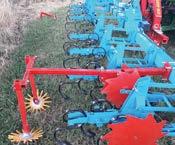

Visit merfield.com/merfield-agronomyltd/2025-physical-ecological-weedmanagement-workshop.htm for full workshop information and to register.
As this goes to print, Agriculture Victoria have confirmed that a previously decontaminated greenhouse (GH) in Victoria has replanted tomato seedlings that have tested positive for Tomato brown rugose fruit virus (ToBRFV) within a very short time.
Dinah
Cohen : TomatoesNZ general manager
It is possible that this disease has been picked up from the growing operation, but it is also possible that the seedlings, which were propagated in New South Wales, arrived at the site already infected.
This is important for tomato growers in New Zealand for many reasons. It’s a reminder that ToBRFV is a highly virulent disease which is difficult to contain and difficult to get rid of. New Zealand tomato growers can’t wait until tomorrow to make changes at their own operations – the time to act is NOW to increase hygiene measures.
Measures includes:
Don’t let anyone into your GH that isn’t directly involved in growing.
Wash and sanitise hands before entering the GH every time.
Walk through a sanitation foot bath/mat at the entrance to the compartment.
Wear dedicated clothes and shoes for the GH.
Don’t borrow tools or equipment from other growers.
Keep plastic crates out of your GH – have them in the packhouse. Don’t trust that the washing process has removed pathogens like ToBRFV.
Know where your seeds have come from and that they’ve been through testing before entering New Zealand.
Ask for your seedlings to be tested for ToBRFV before they leave the nursery.
As a long-term measure talk to your seed company about trialling ToBRFV resistant seeds – even if it’s just a small number of plants.
This final point is one that TomatoesNZ is currently working with New Zealand Plant Producers Inc on. They have a Plant Pass scheme that nurseries can sign up to. We are looking to have basic hygiene measures included in Plant Pass to give growers assurance.


The ultimate assurance though will be through a negative ToBRFV certificate before you accept the seedlings into your GH. As this is the third time that a nursery in Australia appears to have been at the centre of a ToBRFV detection, nurseries in New Zealand are understandably concerned and open to improving their everyday practices.
TomatoesNZ will continue to push the messages about hygiene and testing with them as well as with our own growers.
I still have a few tickets available for tomato growers to attend the Horticulture Conference in Wellington, 26–27 August. These are worth $639 (two days of conference plus the Gala Dinner on 27 August).
There will be sessions on energy, our greenhouse tomato Integrated Pest Management guide and much more. Book your trip to the Capital and come and network with like-minded growers. Email me to receive one of the free tickets.
If you have any questions about anything fresh tomato related, please don’t hesitate to contact me: dinah.cohen@tomatoesnz.co.nz

Potatoes New Zealand and TomatoesNZ have teamed up to run a workshop on the important topic of Tomato Potato Psyllid (TPP) and Liberibacter. Thanks to funding from Te Ahikawariki, this workshop will provide information on latest research from both the potato and tomato industries. Presentations will be given by Frances MacDonald and Jessica Vereijssen, both from Plant & Food Research, Roger Blyth from Seed & Field Canterbury, and Lex Dillon, part of the TomatoesNZ trials into controlling TPP with biologicals as part of Integrated Pest Management.
When: 26 June, 10am – 12.30pm (and then lunch for those attending in person)
Where: Available online and in person at 49 Cronin Road, Pukekohe
A recording of the webinar will be made available after. There will be plenty of time for those attending live to ask questions.
RSVP: www.surveymonkey.com/r/RSVP26June or email me if you plan to join online.

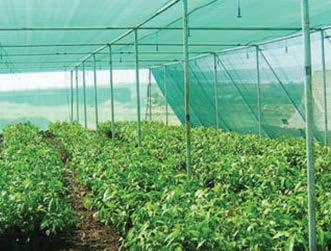

Redpath Greenhouses and Shadehouses, Manufacturing and suppling the industry for over 35years. Designs to suit your business and growing needs from the very large to very small. Designed, Manufactured, Delivered and installed on your site. Council plans and application work included. All buildings provided with manufacturer’s warranty and our construction crews are based nationwide for efficient and speedy assembly and after-sales service. Check out our website below for the full range of buildings, greenhouse films and fabrics.
Strawberries is one of the country’s smallest commodity levy groups and one of its newest. But our commodity levy, whilst new, is proving that collaboration and collective action can make a very real difference for growers.
Sally King : Strawberry Growers NZ executive manager
We don’t have the scale of some of the other commodity levy groups, but we do have a strong affiliation to Horticulture New Zealand, and that gives Strawberry Growers NZ (SGNZ) some voice in the direction of growing in Aotearoa/New Zealand. No grower can operate without sensible rules around water, land and labour; SGNZ advocates hard along with our colleagues for rational and balanced rules and reminds the authorities that there is more to farming than the ‘big end of town’ such as dairy production, animals and forestry.
A recent example: city, district, and regional council officials were invited to visit Berry Farms NZ in Hastings with HortNZ and SGNZ to discuss the challenges in developing berry farms – including competing and sometimes contradictory rules and requirements. Hats off to the officials – a decent number turned up to walk a farm and see why a covered crop, for example, is not a building; or how we manage water; or why our setbacks need not reflect those for other crops. Eyes were opened, good conversations began, and some of rules that are a matter of interpretation can – and I hope will – be better managed after that visit. Similar meetings are being planned in other regions too.
The commodity levy supports this advocacy, but also a wide range of collective issues such as biosecurity, food safety, best practice guidance, factsheets, fantastic research from our talented and hardworking technical team at Berryworld, and protecting/developing our market access to export markets. In the five years of our levy, we have learnt a great deal about sustainable pest management, and specific projects for which we have received government and private co-funding have addressed thrips, Botrytis, mirids and more. SGNZ promotes berries each season via the 5+ A Day programme and in any media opportunity we can grasp. In addition, SGNZ supports the sector in any major event. The country has had a tumultuous five years – a worldwide pandemic, Cyclone Gabrielle and Cyclone Hale. The resilience of the community is exceptional, but SGNZ provides backroom support to ensure information flows to officials and growers connect with the right resources to cope.


PLEASE MAKE YOUR VOICE HEARD DURING VOTING
STARTS: 16 JUNE CLOSES: 7 JULY
Please take a moment to reflect on what the levy has contributed to strawberry growing and please make your voice heard during voting, which starts 16 June and closes 7 July.
The commodity levy supports this advocacy... biosecurity, food safety, best practice guidance, and research
A final thought: thank you to the Board who are volunteers and contribute so much to the direction of our sector. Board members are growers; they understand the industry and work damn hard to improve it for us all.
Make sure you vote.
Contact Strawberry Growers NZ at: info@strawbsnz.co.nz


In May, the Conference of the Parties (COP) to the Stockholm Convention adopted a decision to list chlorpyrifos in Annex A of the Convention, signifying global agreement to eliminate the use of this pesticide. Once the decision is formally published, New Zealand – being a party to the Convention – will implement it, resulting in a ban on the manufacture, import, and use of chlorpyrifos following a transition period. Separately, the Environmental Protection Authority (EPA) is currently reassessing chlorpyrifos. HortNZ has made a submission on this reassessment. The EPA expects to publicly notify its decision by 18 June.
In line with the EPA’s decision to ban the use of the organophosphate pesticides fenamiphos and methamidophos starting 1 July 2024, Ministry for Primary Industries (MPI), New Zealand Food Safety is proposing to remove Maximum Residue Limits, meaning no detectable residues of these pesticides will be allowed in any food products.
Any remaining products containing these active ingredients should be disposed of safely. Contact your local council about disposal options specific to your area. Agrecovery offers a free or subsidised service. These products will be collected at the next round of agrichemical recovery events. While awaiting disposal, ensure that they are clearly labelled and securely stored to prevent accidental use.
The HortNZ policy team noted in its May Policy Update that the Climate Change Commission has released its 2025 advice on updating Emissions Trading Scheme (ETS) unit limits and price control settings. The commission recommends minimal adjustments to ETS settings. The Ministry for the Environment will open public consultation in the coming months. The government will decide on the new settings in time for the regulations to be updated by 30 September 2025. The new settings will take force on 1 January 2026.


HortNZ strongly encourages growers to explore what membership of the newly established Heretaunga Sustainable Water Group may be able to offer them. For more information about the group and details about how you can join it, scan the QR code.
Get the latest horticulture policy and risk updates, industry programmes and events in your inbox and have your say with HortNZ’s Weekly Briefing. Email comms@hortnz.co.nz to receive the weekly email.
